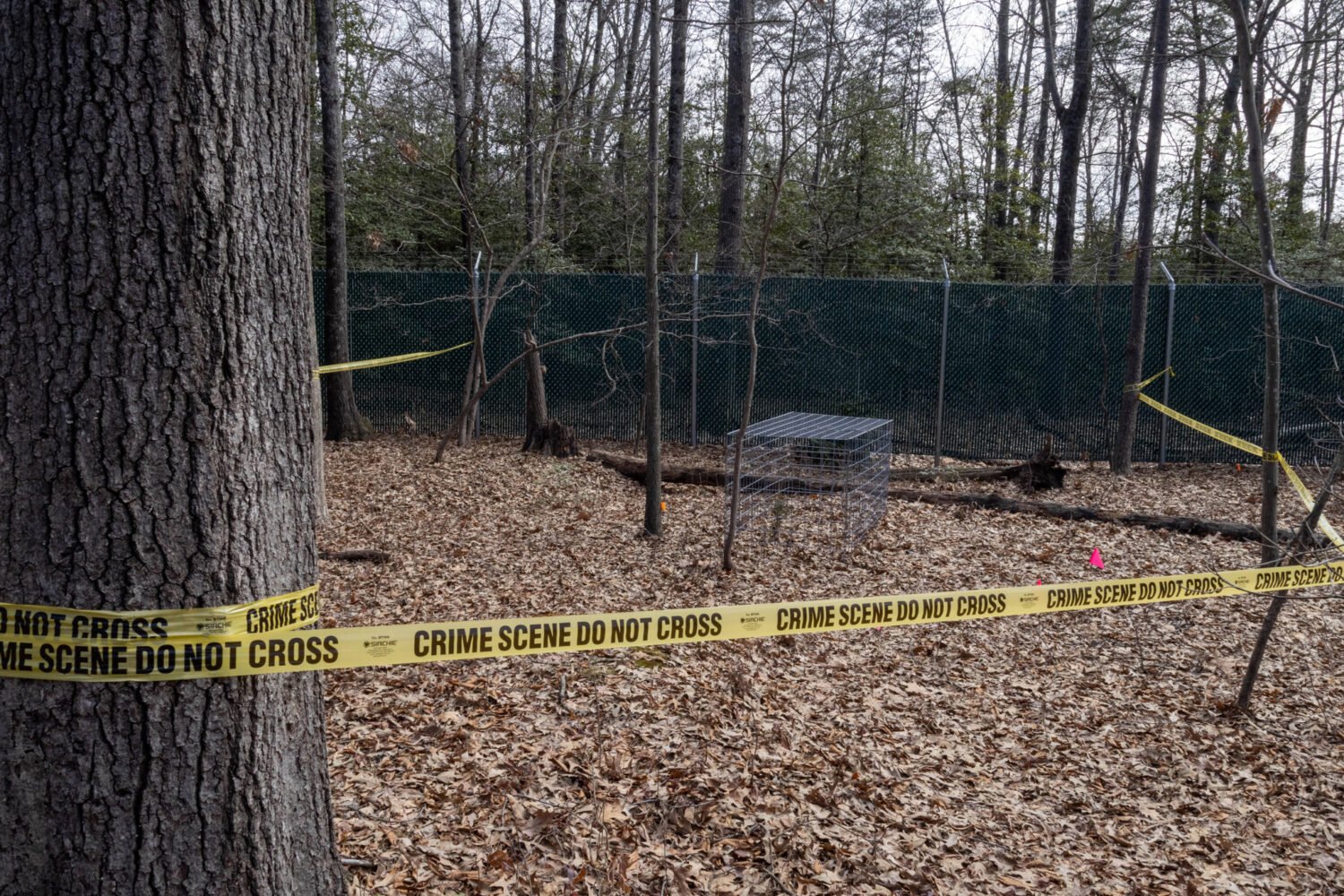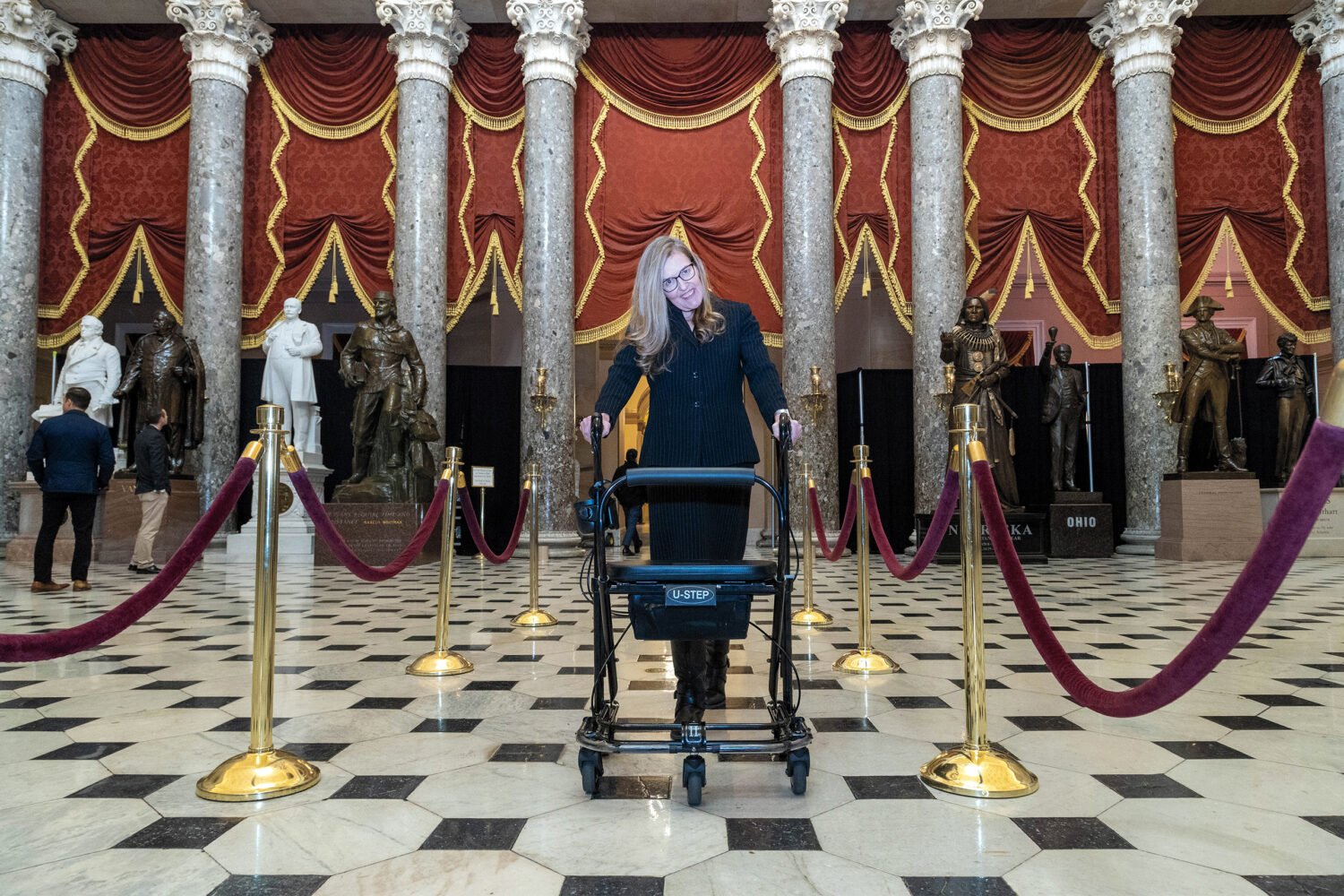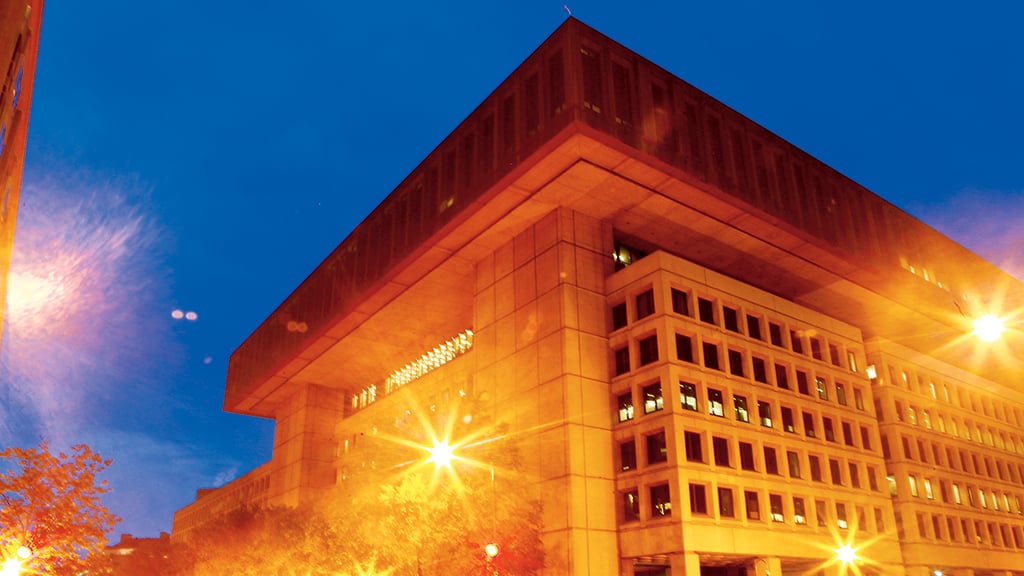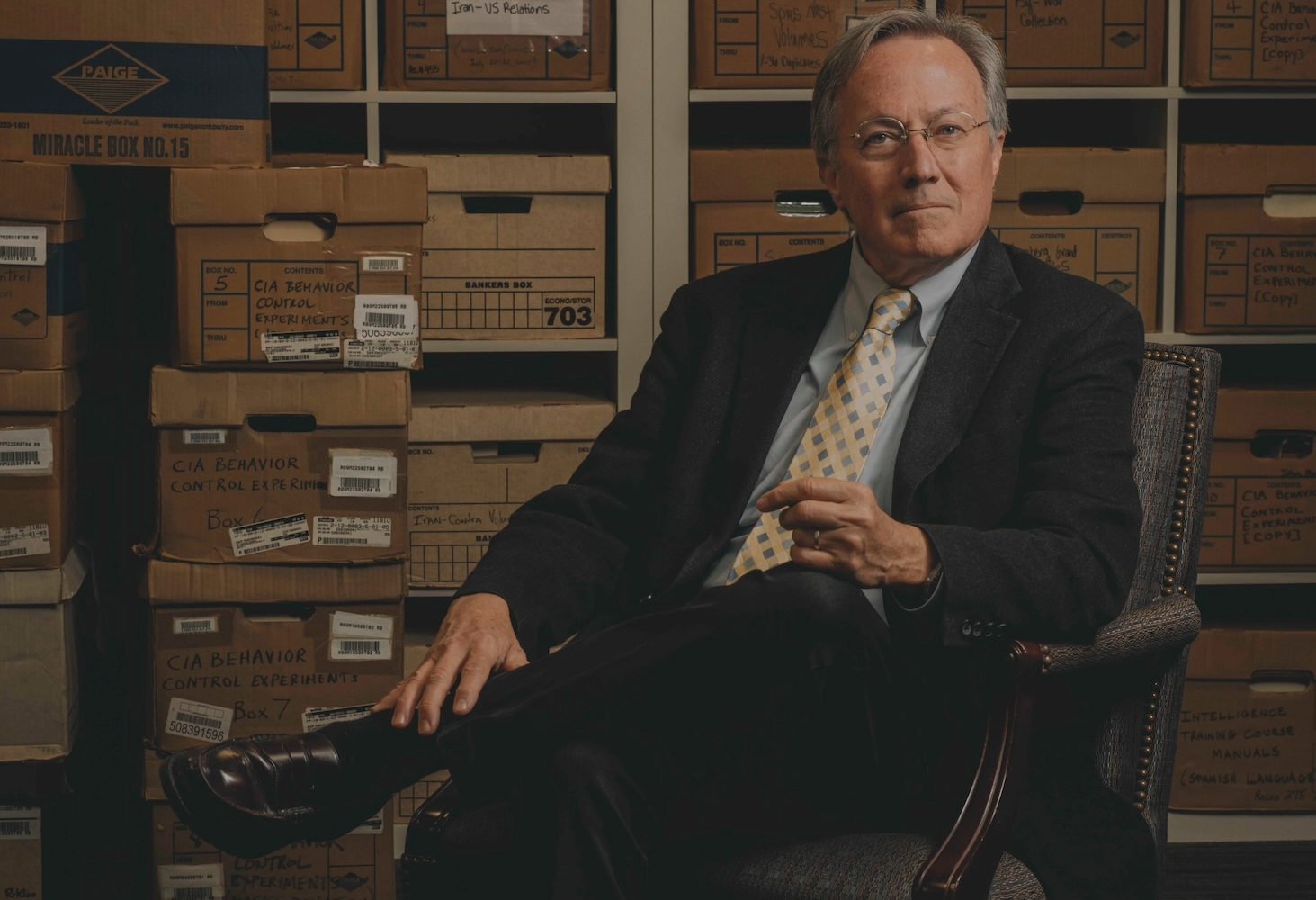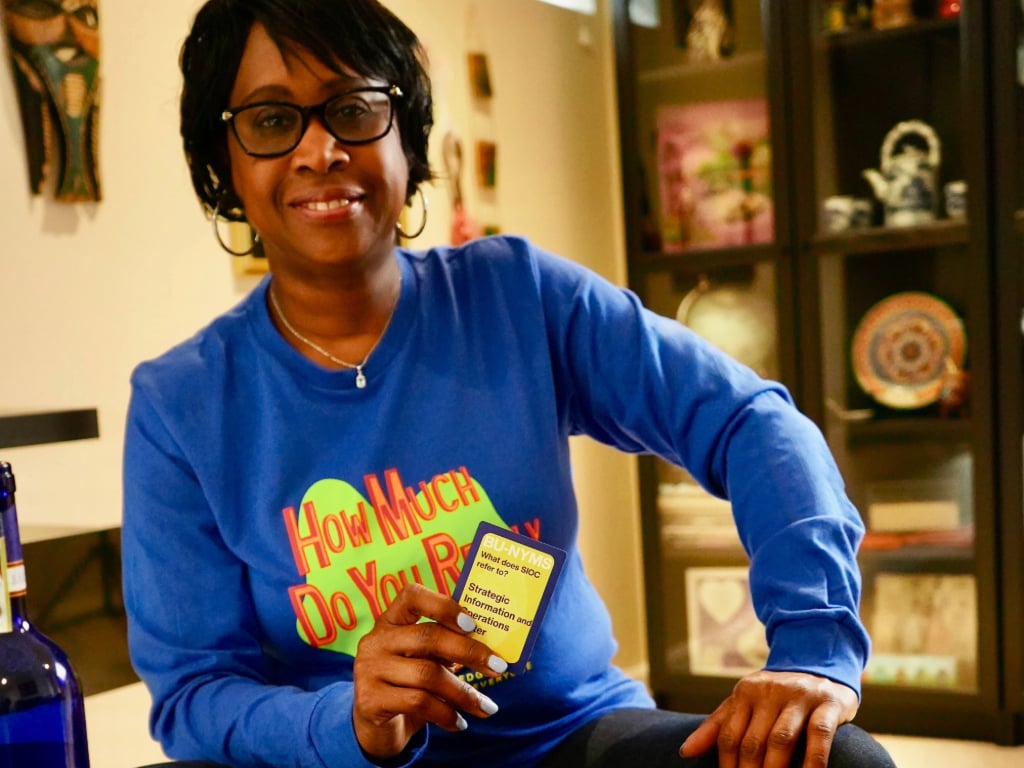Contents
Is Washington the world capital of espionage? Officially speaking, that’s top-secret—after all, our resident spies, foreign and domestic, aren’t about to raise their hands. Still, you can make a strong case that when it comes to the shadowy world of intelligence, our city stands alone.
The area is home to an alphabet soup of federal intelligence agencies: the CIA and DIA, NSA and NRO, INR and FBI. (In case you were wondering: The NRO does spy satellites, and the INR analyzes intel for the State Department.) Our government is a prime espionage target for international foes and friends alike, often working out of their embassies. The city’s very namesake, George Washington, wasn’t only the nation’s first President—he was its first spymaster, skillfully managing covert operations to outfox the British and win the Revolutionary War.
In an era of unprecedented electronic surveillance, spying largely remains a people profession: that is, convincing others to share their secrets. As such, is it any wonder the International Spy Museum—which, naturally, is located here—estimates that there are more than 10,000 spies in Washington, working and living among us?
Your softball teammate might be a sleeper agent. Your favorite coffee shop might be a place for passing classified documents. You might wake up one morning, as I once did, and discover that the group of serious-looking men in nondescript suits huddled in your building the previous night were FBI agents raiding the apartment of Russian foreign agent Maria Butina—whose American boyfriend you also recognize, because he always stopped to pet your dog.
In Washington, you can never be sure what’s on the level—and what’s undercover. And that, more than anything else, is what makes us a city of spies. “I’ll see someone step out of a building, get in a car, the car turns into an alley, and think, ‘Maybe something is up,’ ” says a retired senior CIA officer who still lives in the area. “Or I’ll see a sticker on a park bench and wonder, ‘Is it a [spy] signal being put down or just from a kid with a sticker?’ You look around your neighborhood and think, Some of these people could be spies. Because you never really know.”
—Patrick Hruby
Welcome to Spytown
Memorable—and memorably weird— moments in DC-area espionage
1814
During the War of 1812, First Lady Dolley Madison takes her spyglass to the White House roof to watch for the British army.

1861
From the current site of the National Air and Space Museum, Thaddeus S.C. Lowe runs a telegraph wire from an observation balloon 500 feet in the air to the White House. One of his balloons will later allow Union troops to accurately fire on Confederates without seeing them, a warfare first.

1915–16
In his Chevy Chase lab, American-born German agent Anton Dilger cultivates anthrax and other diseases used to infect horses and mules bound for Allied forces in Europe. After fleeing to Spain, he dies in 1918 as a victim of the Spanish-flu pandemic.
1937–40
Congressman Samuel Dickstein accepts monthly payments from Soviet intelligence in exchange for information and political influence that proves mostly unhelpful and impotent, leaving his handler to gripe that Dickstein is “completely justifying his code name” of CROOK.
1942
During a joint US/UK intelligence operation to pilfer military ciphers from the Vichy French Embassy in DC, spy Amy Elizabeth Thorpe successfully distracts a night watchman by wearing only a necklace and high heels.

1959
FBI double agent Joe Cassidy befriends Soviet spy Boris Polikarpov while playing pickup volleyball at the downtown YMCA, beginning a 23-year stretch of feeding the Soviets sanitized chemical-warfare information that allows the US to identify ten Soviet spies.

1975
Three years after being spied on by the CIA in an unsuccessful attempt to identify his sources, Bethesda-based Pulitzer-winning journalist Jack Anderson breaks the story of an $800 million Agency project to recover a sunken nuclear-armed Soviet submarine.

1980s
The FBI tracks the movement of suspected Soviet spies in the Washington area via SPIDERWEB, a system of small transponders secretly installed in Soviet Embassy vehicles. Similar tech would later become the basis for electronic toll systems.
1985
Arrested at a Rockville hotel for running a spy network that for more than 17 years sold classified military information to the Soviets, naval officer John Walker tells interrogators that “Kmart has better security than the Navy.”

1994
CIA officer Aldrich Ames, perhaps the most damaging spy in US history, is arrested near his Arlington home for selling secrets to the Soviets. A subsequent auction of the flashy jewelry that Ames and his wife bought with ill-gotten cash includes a chain with a pendant of a golden Russian bear.

1999
After watching Russian “diplomat” Stanislav Gusev repeatedly Mill ARound outside State Department HQ wearing an earphone plug—and one day reading a newspaper upside down—federal agents discover an implanted listening device in a conference room near the Secretary of State’s personal office.

2009
DC Septuagenarians Kendall and Gwen Myers are arrested after 30 years of spying for Cuba. The couple received coded shortwave radio messages from their handlers, passed stolen documents at the Safeway and Whole Foods stores in Glover Park, and secretly met with Fidel Castro in 1995.

2010
The FBI arrests and deports ten Russian spies—three living in suburban DC—who had been in the US for years and carefully constructed elaborate cover identities. Two of the spies reportedly inspired the hit TV show “The Americans.”
Back to Top
01 I How to Tell if Your Neighbor is a Spy
Suspect that someone is a secret agent? Here are some helpful hints that they may be operating undercover.
They’re remarkably unremarkable.
The late CIA legend Tony Mendez—portrayed by Ben Affleck in the movie Argo—used to say a “little gray man” was the perfect spy. “You don’t want to be memorable,” says Amanda Ohlke, director of adult education at the International Spy Museum. “A good spy is not in his bespoke suit, winning at gambling. They’re actually fading into the wallpaper.” Another clue: They avoid talking about themselves. “If you’re interacting with your neighbor and every time you meet, you walk away with them knowing a lot more about you and you know virtually nothing about them,” well, that could be a hint, Ohlke says.
They’re hard to reach during work hours.
Secure facilities around the area require visitors to stow devices like phones and smartwatches in lockers while they’re inside. If your neighbor doesn’t respond to the neighborhood group text promptly, that may be a tell. “I’ll have people apologize and say, ‘I’m so sorry. I couldn’t get back to you.’ Like, I know—you don’t have your phone,” Ohlke says.
They can outdrink you.
The story goes that the KGB invented a pill that supposedly allowed its agents to consume alcohol without getting sloppy, but more likely, says Ohlke, your neighbor can pound more drinks than you because they’ve increased their tolerance through practice—one possible reason so many Marines end up in the clandestine services. “You’re three sheets to the wind and you would swear they match you drink for drink, but they’re sober,” Ohlke says. “They never lose control.”
They’re not thrilled to run into you unexpectedly.
One former spy Ohlke knows tells a story about a time when she was meeting an asset in an airport and saw a neighbor charging up to say hello and remark upon the great coincidence: “She’s just freaking out, losing it, because that asset knows her by a different name than her neighbor does.” The spy sprang up and intercepted her neighbor before the asset was any the wiser.
They know how to improvise.
Your neighbor may never have piloted a crocodile-shaped submarine to a villain’s lair, but they will always stay calm and may think laterally to get out of jams. The Spy Museum’s first director, the late Peter Earnest, once told a story of his own “Bond moment,” when he needed to plant a bug in an asset’s desk during a black-tie reception. He had to lie under the desk and drill small holes for the bug with a small, hand-operated tool, so he covered his tuxedo front with his handkerchief, then crumpled the cloth up with the wood shavings inside and returned to the party. “No one had noticed I was missing; no one asked where I had been,” he said.
They find you fascinating and attractive.
Charm is an indispensable tool for anyone who tries to recruit people to talk about things they shouldn’t. So if you have a job that involves sensitive information, be realistic about unexpected flattery. “As we always say, you’re not suddenly a 10 if you’ve always been a 6,” Ohlke says.
—Andrew Beaujon
Back to Top
02 I Deep Coverage: How the Media Reports on Spying
Encrypted comms. Secret sources. Ethical dilemmas. The work of intelligence reporting can mean acting like a spy.
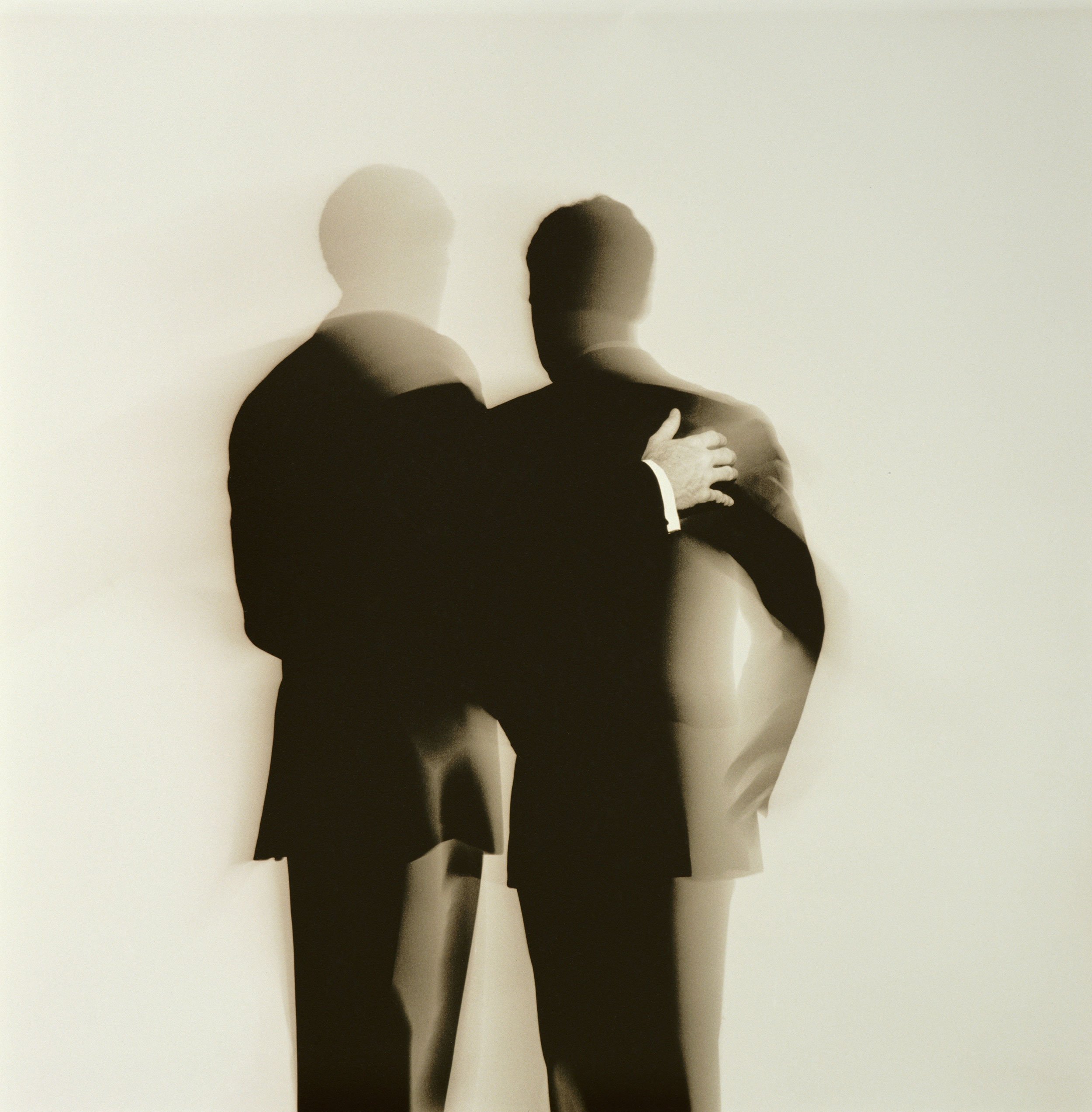
In Washington, spies aren’t the only professionals practicing tradecraft. Reporters who cover the intelligence community have their own unique practices, too.
Given the secretive nature of the field, it can be tough for journalists to develop sources among current or former intelligence-agency officials. But when he was getting started, Jeff Stein—a veteran journalist who now edits the news outlet SpyTalk—had a leg up: He’d been an Army intelligence officer during the Vietnam War. “So that always put me in good stead [with sources],” says Stein, “and it does to this day.”
Effectively communicating with those sources presents another challenge. New York Times reporter Adam Goldman has the unfortunate distinction of having had his phone records seized by the Department of Justice twice, in 2012 and 2017, during unrelated investigations into how government secrets appeared in the news. “They’re treating us like spies,” Goldman says of the DOJ. “They’re using the most invasive techniques to get the information they think they need.”
As a result, he and his peers take great care to keep their communications secure by, among other things, using encrypted tools like Signal and Protonmail. “You take steps to sort of mitigate these electronic footprints,” Goldman says. “Don’t back up shit into the cloud, don’t put anything in a text.”
The most secure form of communication, however, is face-to-face. So intelligence reporters often prefer to conduct interviews in person—whether out in the open at a coffee shop or in the privacy of a garage. Regardless of where the interview takes place, intelligence reporters have to be extremely careful with their notes. A few years back, when Stein was going through orientation for a new job at a major national news outlet, a lawyer said that the press shield law doesn’t always cover sharing national-security secrets.
“If you’ve got anything you don’t want the feds to see,” the lawyer advised, “destroy it.”
Because those who provide government secrets to the media could face harsh repercussions if their identities become public, intelligence reporters are more likely to offer them the protection of anonymity in their articles. “When an intelligence reporter uses anonymous sources, it’s not a question of [the source] violating some sense of decorum,” says Shane Harris of the Washington Post. “In many cases, we are dealing with sources who, if they do go on the record, could get arrested, or at least lose their job.”
The work of intelligence reporting can also involve tricky ethical decisions. Harris says that when they obtain a particularly explosive piece of information—about, say, a pending treaty or an ongoing CIA operation—intelligence reporters must bring their reporting to officials at the appropriate agency. In addition to providing an opportunity for comment, this gives the government a chance to make a case, should it choose to, that publishing the information would be so damaging to national security that it must be withheld. It’s then up to the journalists and their editors to determine what to do.
These competing imperatives can be hard to balance. Years earlier, for instance, Stein’s editor at Newsweek agreed not to publish the reporting he’d obtained on a joint CIA and Israeli effort to take out a major terrorist, after the government argued that doing so would put additional lives at risk. Eighteen months later, when Stein learned the Post was about to publish that exact same story, he raced to get his out before the competition. He was too late.
“The Washington Post beat us by a couple of hours,” he recalls.
—Luke Mullins
Back to Top
03 I Schools for Spies
From Georgetown to Catholic to Howard, local universities and colleges have long been fertile recruiting grounds for intelligence agencies
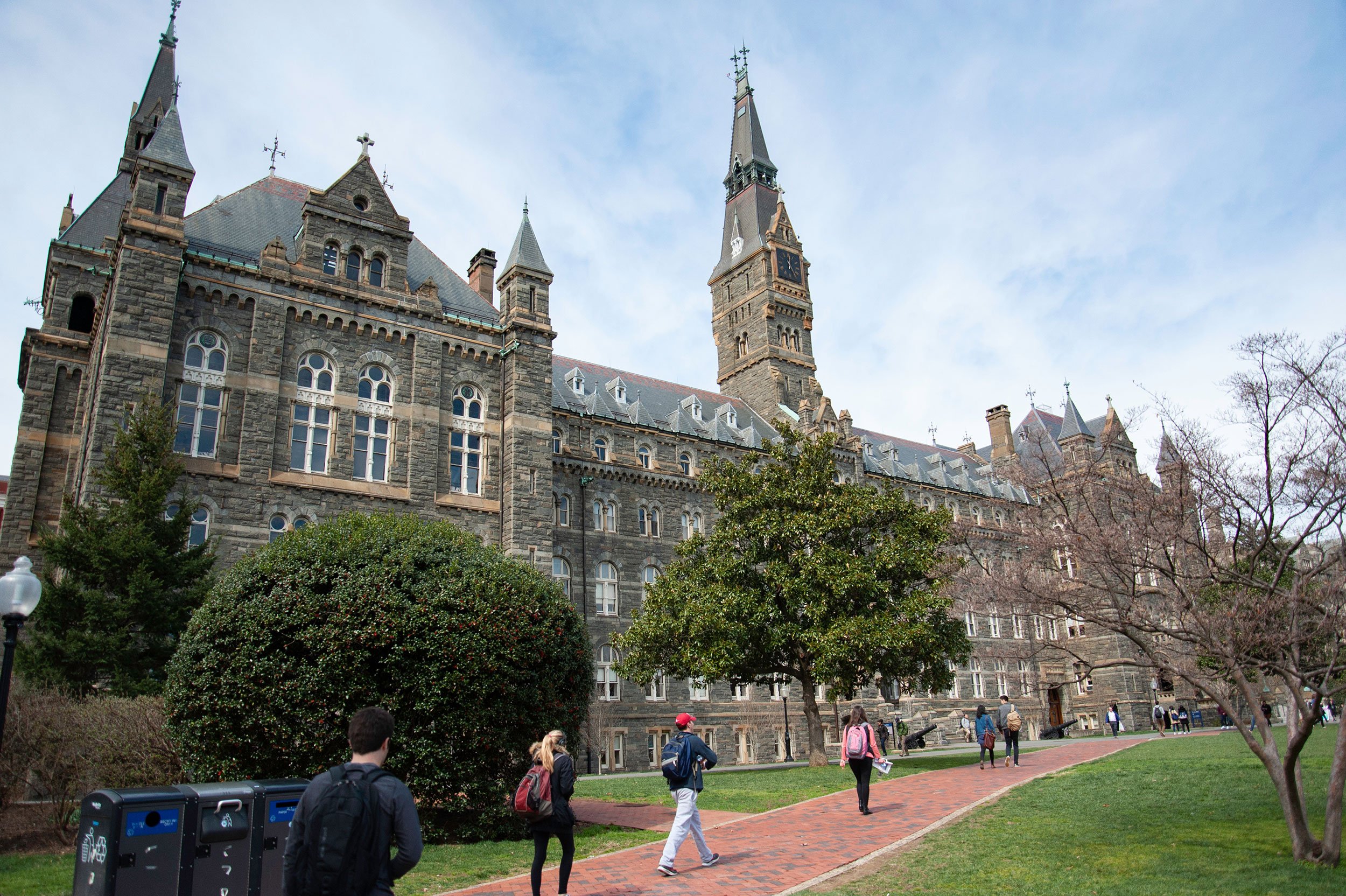
While the need for talented intelligence officers and spies has never flagged, the process of recruiting them has evolved considerably over the years.
During the 1940s and ’50s, the CIA and its predecessor agency, the Office of Strategic Services, established a network of professors—many of whom had conducted intelligence work for the government during World War II—to identify future intelligence officers on their campuses. Although the network was most robust in the Ivy League, it extended into the DC area. Local schools, says Nicholas Dujmovic, a former historian at the CIA, “were kind of low-hanging fruit” for Agency recruiters.
As this cloak-and-dagger network morphed into a formal bureaucracy, college campuses remained fertile recruiting grounds. Some of these efforts involved classroom presentations or career-day booths. Others were more targeted. In her 2019 memoir, Life Undercover, former CIA officer Amaryllis Fox writes about how she was a graduate student at Georgetown in the early 2000s when a CIA officer in residence, Dallas Jones, came across an algorithm she’d built that predicted which regions of the world were most likely to become safe havens for terrorism. Jones reached out, and Fox went on to spend eight years as an undercover operative.
Campuses are also popular with Agency officials looking to identify foreign students who might be willing to serve as intelligence assets when they return to their home countries, says Daniel Golden, author of Spy Schools: How the CIA, FBI, and Foreign Intelligence Secretly Exploit America’s Universities. “A lot of American intelligence agents—FBI and CIA—if they have a day with nothing to do, they’ll head over to [a nearby] university and see who they might be able to speak to and get to know among the actual students,” Golden says. Such recruitment activity is likely taking place at area universities, he notes, given their proximity to CIA and FBI headquarters.
The intelligence community’s efforts to attract talented local students can begin even before they head off to college. According to Dujmovic, CIA scientists sometimes serve as judges for high-school science fairs—part of an effort to show promising young people a career path they may not have considered. “Say you spark an interest in one of these science students who [are] brilliant,” Dujmovic explains. “If he or she eventually considers coming to the CIA, that’s a win.”
In recent years, the CIA has ramped up its efforts to recruit a more diverse workforce. According to the New York Times, the Agency has increased its outreach to historically Black colleges and universities, and in 2020 it released a TV ad in which CIA officials were portrayed by Black, Asian, and white actors. Last year, Howard University joined a group of schools participating in a program from the Office of the Director of National Intelligence that seeks to prepare and hire the next generation of diverse intelligence staffers.
On campuses, interest in joining the CIA is strong. Each year, according to Dujmovic, the Agency gets tens of thousands of applications for the hundreds of open positions it may have. Dujmovic, now director of the intelligence-studies program at Catholic University, says this demand is visible on career days, when the CIA sets up a booth alongside other prospective employers: “There’s always a big line.”
—Luke Mullins
Back to Top
04 I What Hollywood Gets Wrong (and Right) About Spying
A former intelligence officer analyzes spy-movie scenes set in DC. What’s realistic—and what’s pure popcorn fantasy?
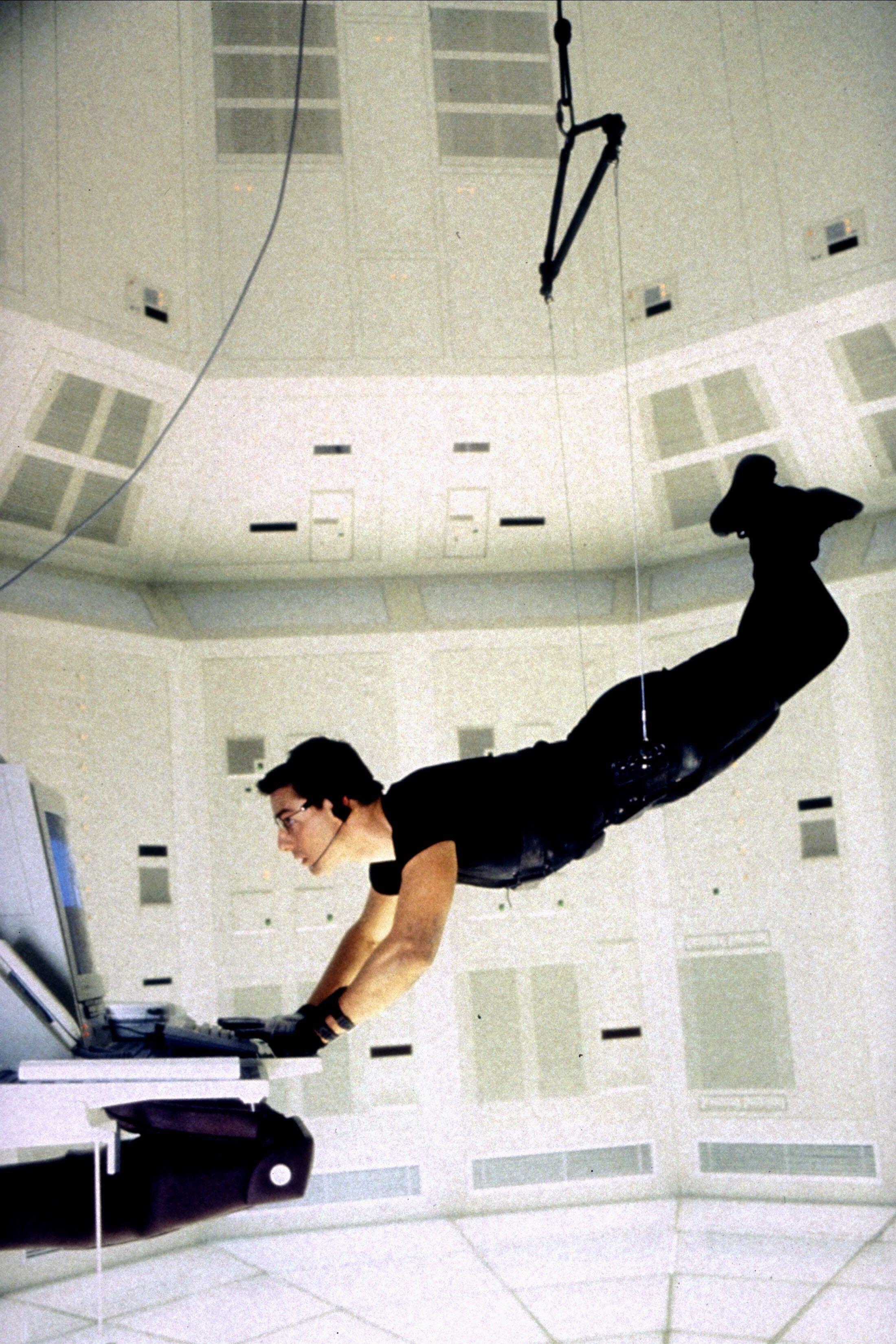
Blame it on James Bond. Decades ago, the fictional spy set the template—gadgets, seductions, car chases, shootouts, stuff blowing up—that Hollywood has followed ever since. It’s an entertaining formula, and one that makes actual spies roll their eyes. “It’s fun to watch the action,” says John Sipher, who had a 28-year career in the CIA’s National Clandestine Service before retiring in 2014. “But in our job, if there’s gunplay, we probably failed. Very few movies are trying to depict spying in an authentic way.”
Sipher is working to change that. The cofounder of Spycraft Entertainment, a DC-and-LA-based production company run by former intelligence officers, he wants to bring true-to-life spy stories to the big screen: less bang-bang and more talk-talk. Real espionage, he says, is about messy, complex, inherently dramatic human relationships, especially the ones between sources risking their lives to provide secret info and handlers working to keep them safe. “Hollywood has tended to use people like us as consultants, but mostly for ‘How do you hold the gun and what color is the badge?’ ” Sipher says. “So you’ll watch a TV show and they’ll get that right, but everything else is absolutely absurd. We want to tell stories that are character-driven.”
With that in mind, Washingtonian asked Sipher to review eight well-known spy-movie scenes set in the DC area, rating their plausibility on a scale of one (pretty realistic) to five (pure hokum) popcorn buckets.
1996 | Mission: Impossible
The scene: To swipe a list of undercover US agents, superspy Ethan Hunt breaks into a vault at CIA HQ protected by sound and temperature monitors, a pressure-sensitive floor, and a laser grid in an overhead ventilation duct.
Stagecraft: When stealing secrets, Sipher says, it’s “better to have an insider do it for you”— which means real spies spend more time cultivating sources than engaging in cat-burglary. “It’s a relationship business. What makes someone tick? Do they hate their regime? Does their family need medicine they can’t get? When you have someone providing information, you don’t have to break in and steal stuff.”
Spycraft: The vault room’s specifics are showbiz, but its layered security is true to life. “The idea is that if you get past one or two things, you still have five or six more that you won’t,” Sipher says.
Popcorn rating: 4.5
1987 | No Way Out
The scene: In a shocking twist—spoiler alert!—naval intelligence officer Tom Farrell is revealed to be “Yuri,” a Soviet sleeper agent raised from a young age as an American who later became a military hero and seduced the Secretary of Defense’s mistress to gather intel.
Stagecraft: Seducing the SecDef’s mistress? “Sexed up,” Sipher says dismissively, adding that Farrell’s fabricated life story likely wouldn’t hold up against the kind of background checks that accompany senior intelligence jobs.
Spycraft: Russian sleeper agents do walk among us! In 2010, the FBI arrested ten deep-cover agents who had assimilated into US society by marrying, buying homes, raising children, and holding jobs. “The Russians take particular pride in it,” Sipher says.
Popcorn rating: 2
1998 | Enemy of the State
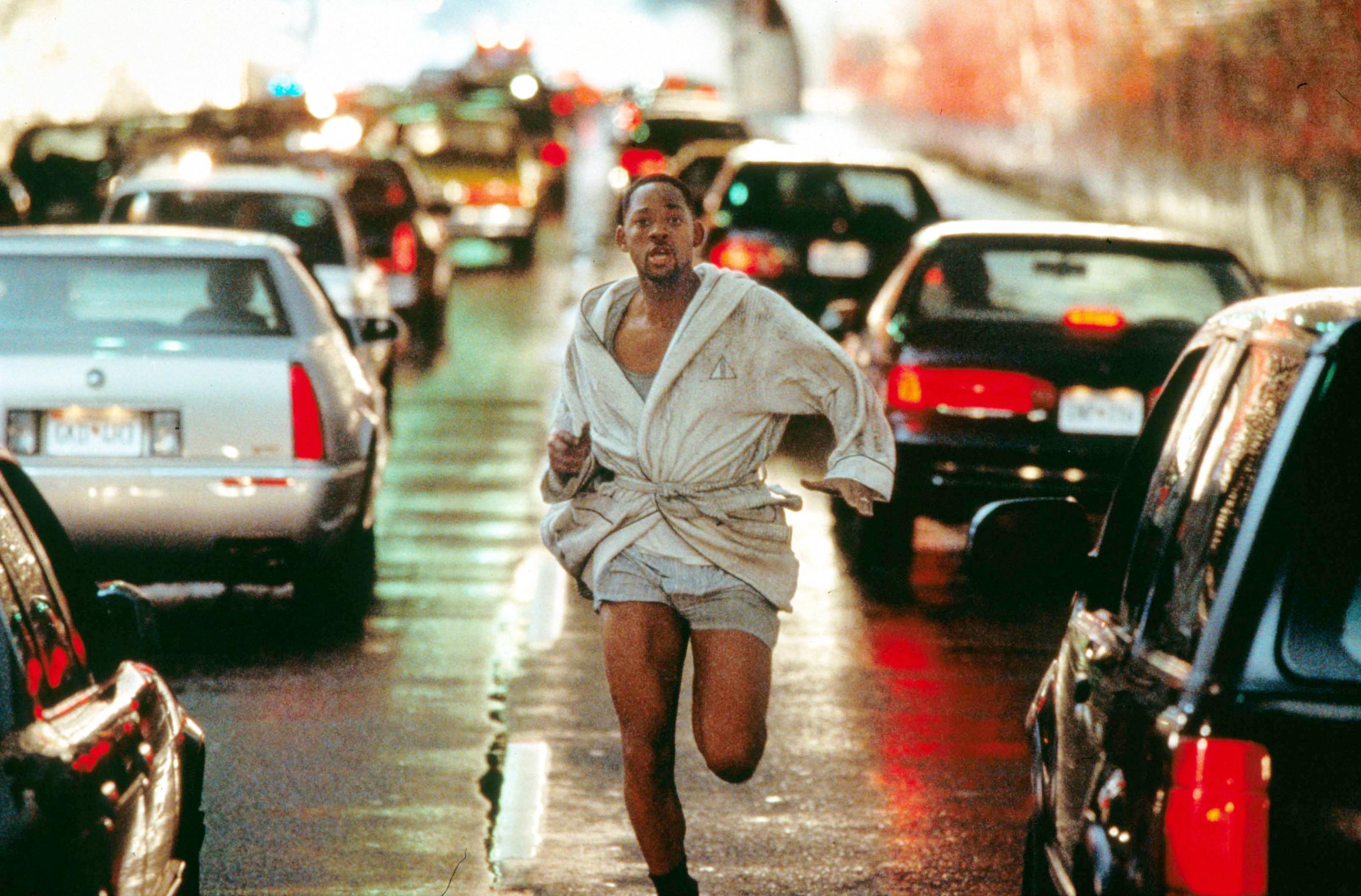
The scene: After biologist Daniel Zavitz inadvertently records the murder of a congressman by a team of rogue NSA agents, they chase him across a series of DC rooftops with the help of a surveillance helicopter and orbiting spy satellite.
Stagecraft: Killing elected officials isn’t quite in the remit of the actual NSA, which collects foreign signals intelligence. Nor is “chasing bad guys with helicopters and guns,” Sipher says. “I think [real-life] NSA officers would get the biggest kick from the part where they sprint ten minutes through the city to capture a target. We don’t normally think of them as super-fit. They are usually nerdy brainiacs who sit at computers.”
Spycraft: While spy satellites can provide remarkably detailed images, they can’t be quickly commandeered for espionage. “They’re busy looking at North Korea,” Sipher says. “It costs millions of dollars to move them around. If you called and said, ‘I need this to track a guy,’ it would be like, ‘Who the [expletive] are you?’ ”
Popcorn rating: 4.5
2007 | Charlie Wilson’s War
The scene: While meeting in his office with CIA agent Gust Avrakotos to discuss covert support for the Afghans fighting Soviet occupation, Congressman Charlie Wilson is interrupted by a phone call and shoos Avrakotos into an adjoining room. When Avrakotos returns, he reveals that he had been listening via a bugged bottle of Scotch.
Stagecraft: Bugging a member of Congress would violate the CIA’s 1947 charter, which prohibits the Agency from domestic spying. Doing so would also be “insane,” Sipher says. “Congress is our oversight. It would be a huge scandal.” To wit: In 2014, then–CIA director John Brennan apologized to the Senate Intelligence Committee after the Agency spied on computers used by its staffers. Senators were not happy!
Spycraft: Avrakotos is also guilty of sloppy technique. “I can’t think of a worse place to put a bug,” says Sipher. “Why wouldn’t you stick it under his desk?”
Popcorn rating: 5
2010 | Salt
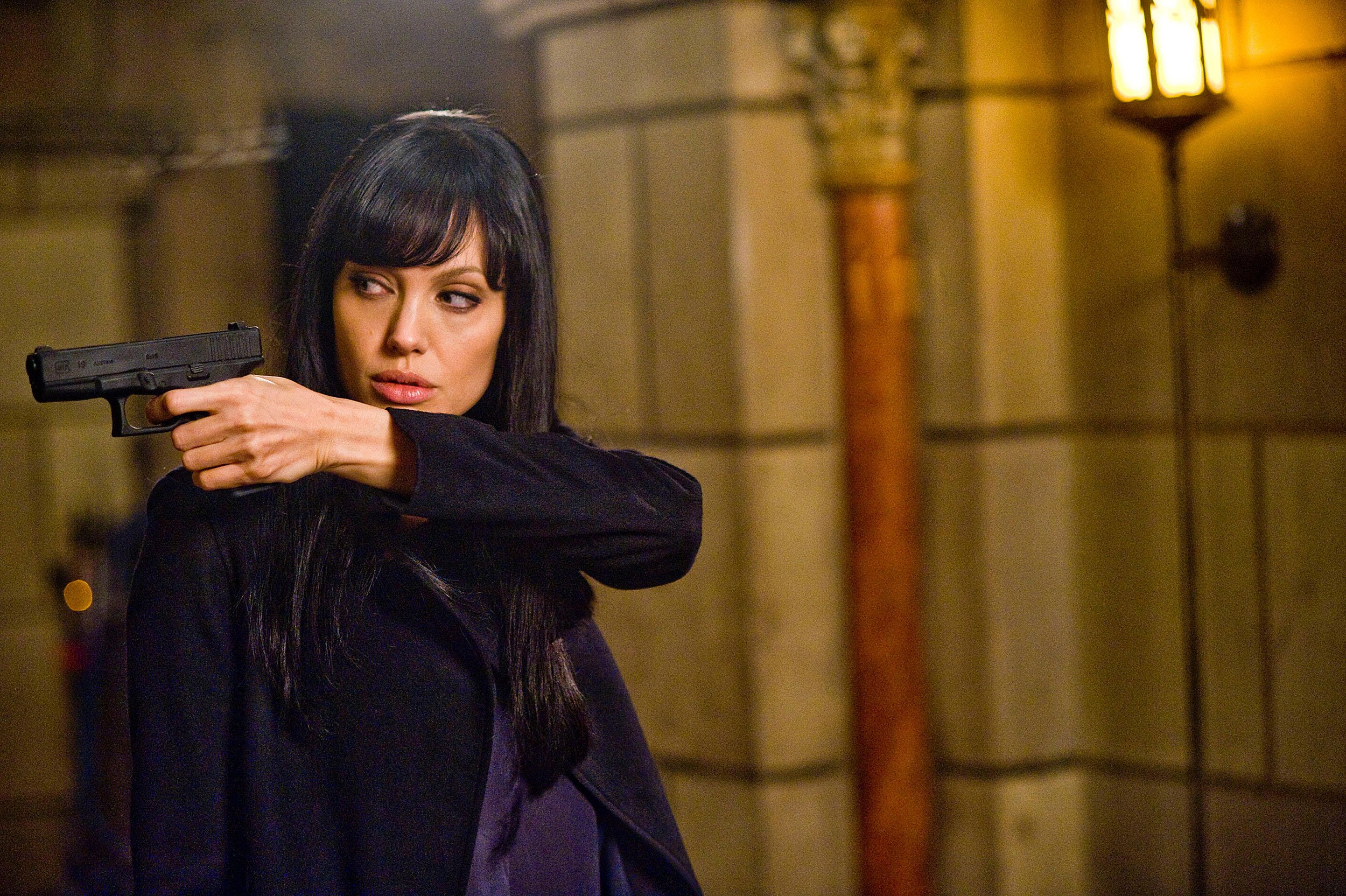
The scene: When CIA officer Evelyn Salt is revealed to be a Russian sleeper agent (another one?!), she escapes from an Agency building in DC by blasting a SWAT team with an IED made from office cleaning supplies.
Stagecraft: The CIA tracks Salt from a control room that’s one part Monday Night Football broadcast truck, two parts celluloid fantasy. “Hollywood loves someone being able to bark out orders, change surveillance cameras, listen in on calls, turn elevators on and off, all on the fly,” says Sipher. “Actual practitioners laugh at these things.”
Spycraft: Salt’s Windex bomb, Sipher says, is “a MacGyver thing.” But CIA agents do receive some unusual training: “If you’re ever taken hostage, you can use your urine and a pen to do secret writing.” Okay!
Popcorn rating: 4.5
2008 | Burn After Reading
The scene: After finding a disc containing copied data from a former CIA agent’s personal computer in a gym locker, a pair of dopey employees visit the Russian Embassy and try to sell the data.
Stagecraft: Though the film is “funny and absurd,” Sipher says, this scene’s premise is “as realistic as it gets.” Many of America’s most damaging traitors started by walking into the Soviet Embassy.
Spycraft: Sipher says most of the people who enter embassies offering information are “nut jobs—but you still have to listen to them. Intelligence agencies take this very seriously, because they benefit from these kinds of volunteers.”
Popcorn rating: 1
2012 | Argo
The scene: While brainstorming how to rescue six Americans hiding in Tehran following the 1979 storming of the US Embassy, State Department officials consider pretending the six are journalists or having them escape Iran via, uh, bicycles—failing to impress CIA agent Tony Mendez.
Stagecraft: The State Department would “never handle a covert operation,” Sipher says, adding that “the CIA never uses journalist cover [identities] or credentials.”
Spycraft: Sipher says that while the movie Mendez is much more of a one-man show than his real-life counterpart, the film—based on a true story—plays things mostly straight.
Popcorn rating: 1.5
—Patrick Hruby
Back to Top
05 I The Spy Party From Hell
One of the Cold War’s biggest spy scandals started with martinis, a rude caricature, and a near fistfight at a DC dinner party full of spies
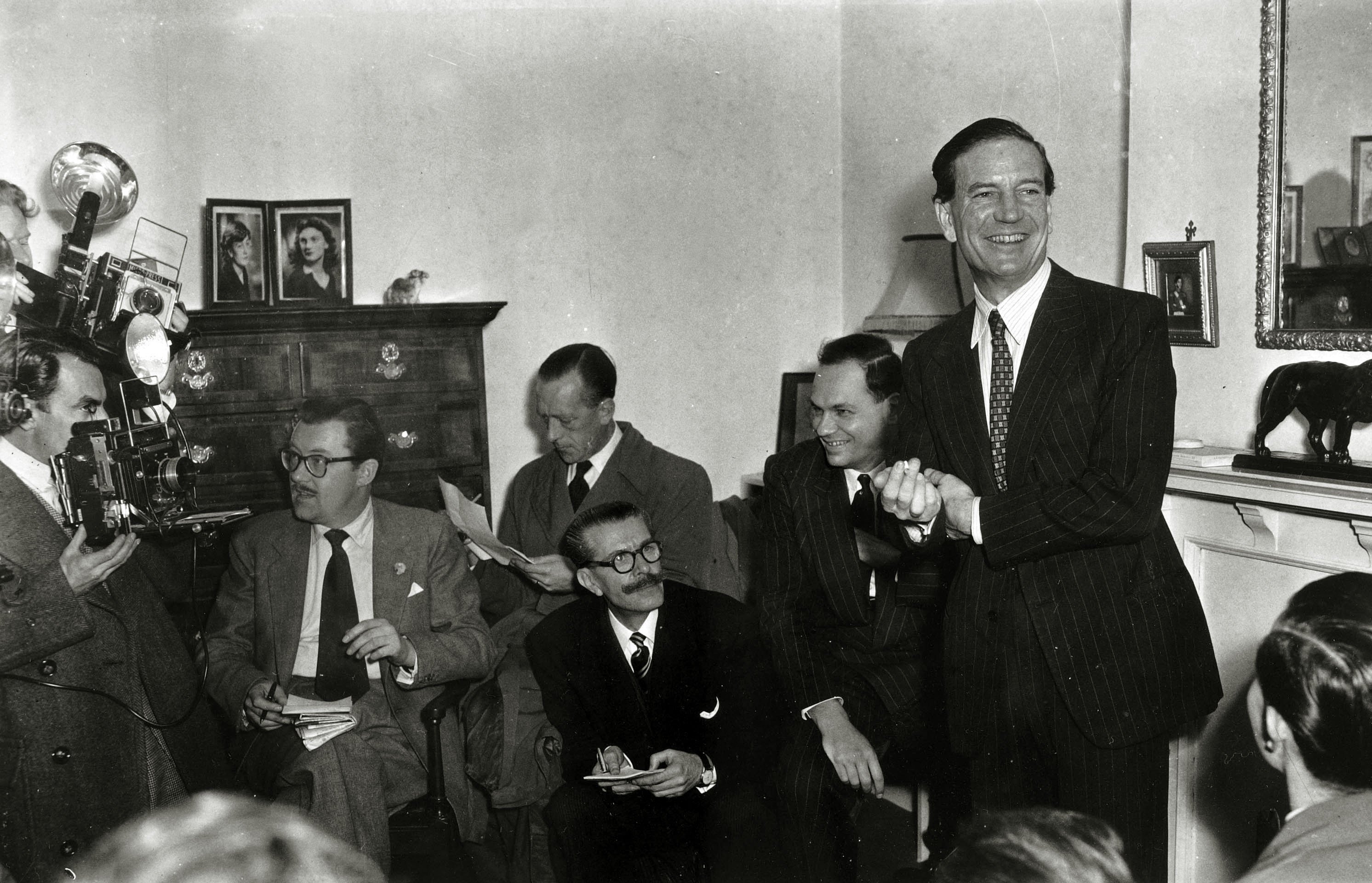
Dinner parties are a fixture of Washington life, but few have been more consequential than one that took place in American University Park on January 19, 1951. British author Ben Macintyre called it the “party from hell.” Former Washington Post reporter Steve Vogel reckoned the only local event that went worse was Dolley Madison’s 1814 fete for military officers, which was abandoned as British soldiers took over town. In that case, the party crashers ate the food, drank the wine, and burned the White House for good measure.
The 1951 party’s hangover lasted longer. It took place at the home of an employee of the British Embassy named Harold Adrian Russell Philby—who went by his schoolboy nickname, Kim. His purported job was the embassy’s first secretary, but most of the people he’d invited over knew he actually was the liaison between MI6, the UK’s foreign-intelligence service, and its US counterparts. Philby also had a side gig that was less common knowledge: He was a longtime spy for the Soviet Union. In fact, he had spent much of his tenure in Washington working to throw investigators off the scent of a Soviet mole with the code name Homer.
Philby and his wife, Aileen, lived in a Colonial Revival house on Nebraska Avenue that elm trees kept dark and cool in the brutal DC summers. His secret photo lab was below the dining room, and he’d squirreled other spy equipment away elsewhere in the house. The Philbys shared the house with their four children, a Scottish nanny, and, for the previous few months, a friend of Kim’s whom Aileen loathed: Guy Burgess.
Burgess and Philby had met at Cambridge University. Apart from a shared habit of heavy drinking—hardly uncommon in British and American professional circles at the time—they weren’t much alike. Philby was cerebral and retiring. Burgess commanded the spotlight wherever he went. He was also openly gay—rare for the era—and an enthusiastic patron of London’s seamiest offerings. When Robert Mackenzie, the British Embassy’s security chief, was warned by the Foreign Office that Burgess’s behavior might become worse in the US, he said, “What do they mean ‘worse’? Goats?” Philby had recruited Burgess as a Soviet spy at university and offered him, over Aileen’s objections, a room in the basement. No one, Philby figured, would imagine he was stupid enough to let a fellow spy lodge in his own house.
Nonetheless, Philby asked Burgess to stay away from his dinner party, which was fraught enough already. He’d invited representatives of both the FBI and the three-year-old CIA, agencies that squabbled over jurisdiction and whose cultures couldn’t have been more different. The FBI prided itself on being filled with hard-working Midwesterners; its leaders viewed the CIA as being staffed by effete Ivy Leaguers. FBI boss J. Edgar Hoover had drummed one guest, Bill Harvey, out of the agency because of his excessive drinking—and was appalled when Harvey joined the CIA afterward.
Among the guests: James Jesus Angleton, a rising star at the CIA, and his wife, Cicely D’Autremont Angleton. Philby had taught Angleton almost everything he knew about counterintelligence—including the craft of catching double agents—during weekly three-martini lunches at Harvey’s, DC’s most famous restaurant. (Hoover ate there regularly as well; it was, as DC restaurant historian John DeFerrari says, “an expense-account kind of place, a guys’ place if you will.”) Mackenzie attended with a date. Also on hand were British scientist Dr. Wilfred Mann; his wife, Miriam (who didn’t like Philby); and FBI agent Robert Lamphere, who’d been key to busting up Julius and Ethel Rosenberg’s spy ring. Bill Harvey came with his wife, Libby, a Kentuckian who could drink as much as anyone there. She didn’t know Burgess, and neither did Bill. That was about to change.
The Philbys split the difference between the FBI’s whiskey drinkers and the CIA’s Burgundy sniffers by serving pitchers of martinis. It was 65 degrees outside, one of those occasional days when the mediocrity of Washington winters relents a bit. Aileen Philby had worked hard to torque the party to US standards—there would be no plates of cold cuts. Libby Harvey wasn’t impressed: Lit up like a Christmas tree by the time the guests sat down to dinner, she complained about a “typical goddamn British party” and stage-whispered, “Isn’t this God-awful?” to Lamphere about every aspect of the party. “I spent most of the meal attempting to quiet her,” he wrote in his memoir.
The guests repaired to the living room after the meal, and the Philbys broke out the whiskey. As if on cue, Burgess appeared. There are several accounts of what happened next, but they all agree he was noticeably drunk and characteristically mean. He got into a debate with Mickey Ladd, Hoover’s number three. Burgess fancied himself a caricaturist and, when he saw Libby, exclaimed, “How extraordinary to see the face I’ve been doodling all my life.” He insisted on drawing her. When he finished and held the drawing up for the Harveys to inspect, the trouble began.
Accounts differ on the content of the drawing. Libby Harvey had a prominent jaw, and the kindest version is that Burgess had exaggerated it to the point that she looked like a hag. Far more reports from attendees are along the lines of Macintyre’s account: “her dress was hiked up around her waist, her legs spread, and her naked pudenda bared.” Libby shrieked. Bill swung at Burgess and missed, then jumped on top of him and choked him. The other guests pulled him off. Burgess left, Angleton took Bill Harvey around the block to cool down, and Cicely Angleton and Miriam Mann commiserated with Aileen Philby in the kitchen. Kim Philby, multiple accounts say, sat disconsolate on the ornate sofa, holding his head, crying, and repeating, “How could you?” No historians seem overly concerned with how Libby Harvey felt afterward.
Bill Harvey, on the other hand, held a grudge. His primary task at the CIA was counterespionage. The Red Scare was in full swing, and Harvey began to take a hard look at Philby, who later characterized Harvey’s investigation as a “retrospective exercise in spite.” He combed through Philby’s activities and noted every time Philby’s presence in Spain or Turkey had coincided with Soviet triumphs and Western failures.
Burgess’s caddish behavior accelerated after the party. That may have been planned, as Philby later claimed. In one day, Burgess racked up three speeding tickets in his 1941 Lincoln Continental in Virginia, and he made such a show of claiming diplomatic immunity that the governor protested. He was recalled to Blighty not long after the Americans discovered that Donald Maclean—another Cambridge classmate who’d worked as a scientist in the States—was “Homer.” Maclean made it home before the hammer fell, and he and Burgess soon defected to Russia.
The British press began to speculate about a “third man” who gave Maclean and Burgess a heads-up. Inspired by Harvey’s memo, the CIA demanded Philby be removed from the US. He left the country after burying his spy equipment somewhere near Great Falls, resigned from MI6, and managed to avoid arrest. In 1963, he slipped out of Beirut, where he’d been working as a journalist—incredibly, he was once again in MI6’s employ—and turned up in Moscow. After becoming a Soviet citizen, he worked for the KGB, married a Russo-Polish woman, and lived in Russia until his death in 1988. Philby was given a hero’s funeral and later was immortalized on a Soviet stamp.
Angleton’s reaction to his friend Philby’s treachery was even more consequential. He was appointed to lead the CIA’s counterintelligence efforts in 1954 and became convinced the KGB had penetrated Western governments and their intelligence agencies, including his own. His “monster plot” theory grew and boosted programs to read Americans’ mail. As Angleton’s conspiracy theories and deep-state infrastructure grew, his investigations ruined lives, including those of many intelligence officers he suspected of treason. His “most significant and enduring legacy was to legitimize mass surveillance of Americans,” biographer Jefferson Morley wrote.
Guy Burgess, on the other hand, all but disappeared into the Soviet night. In 2015, the Canadian Broadcasting Corporation discovered an interview with him, shot in 1959 by camera operator Erik Durschmied, that hadn’t been archived properly. In it is little trace of the rakish charm he was reputed to exude. His face is bloated from alcoholism and his voice high and whiny. He denies being a traitor and discusses his wish to visit his family in Britain, with the condition that he be allowed to return to Russia. He seems laughably unaware that his party-crashing days are over.
The “spy party from hell” incident will be included in an upcoming exhibit at the National Counterintelligence and Security Center’s “Evolution of Espionage in America” digital museum.
—Andrew Beaujon
Back to Top
06 I DC’s Best Spy Attractions
Spy-curious? From museums to tours to a mystery bar that may not exist, Washington offers a range of espionage-related things to see and do.
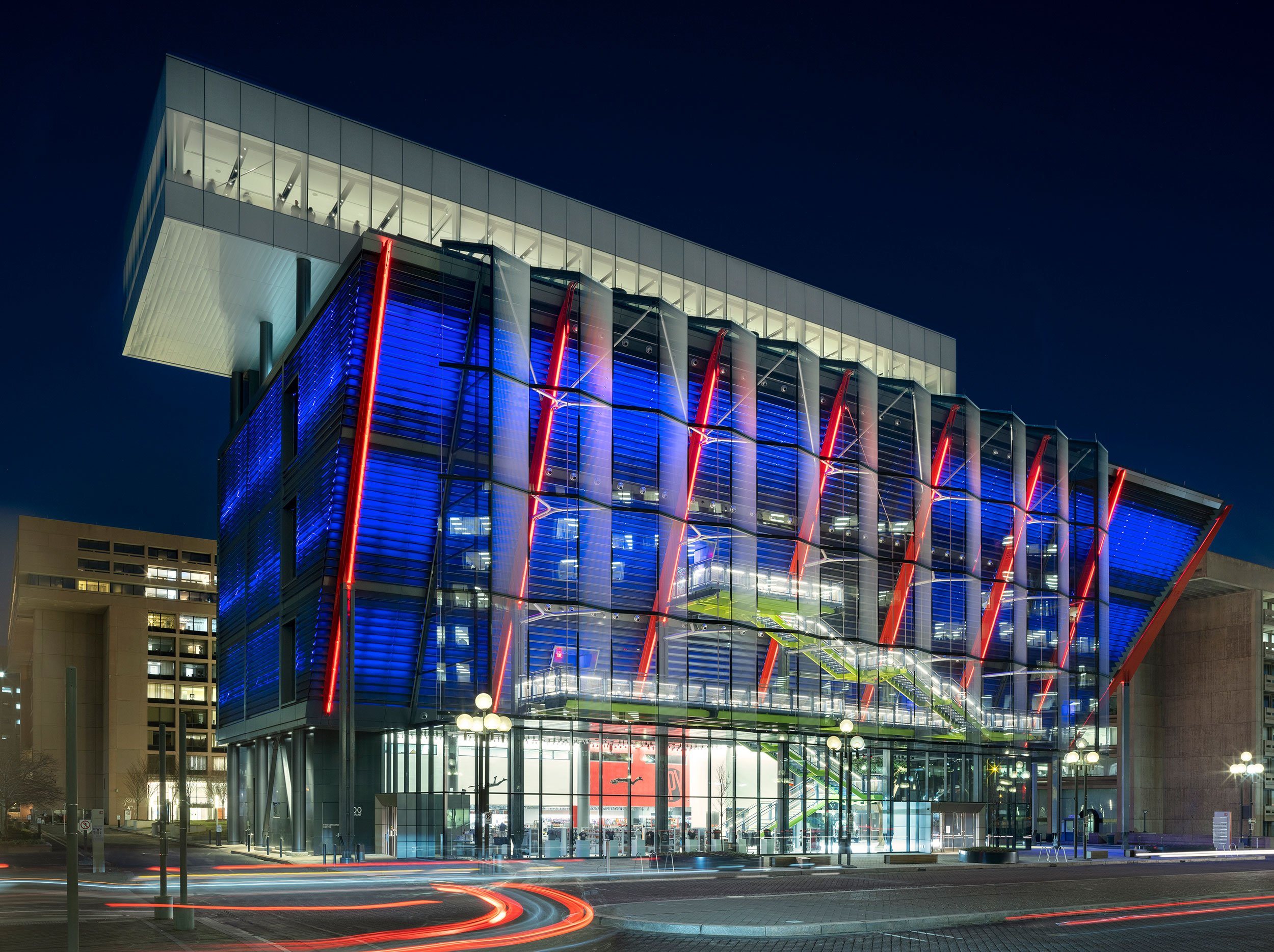
International Spy Museum
700 L’Enfant Plaza, SW.
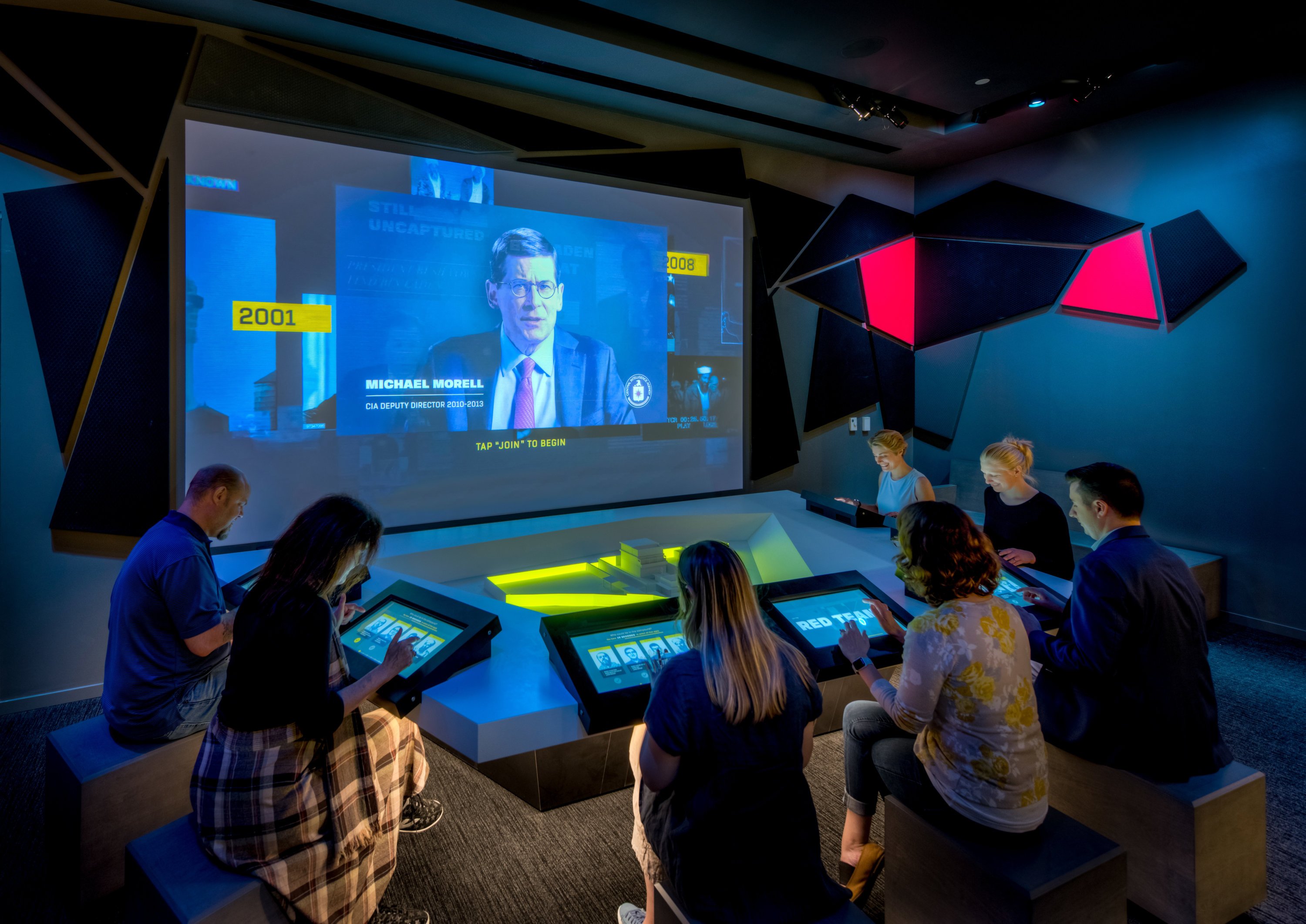
In the wrong hands, a DC spy museum could have been, well, an extremely corny tourist trap. Here’s James Bond’s exploding pen! Here’s a replica of said pen for sale at our gift shop! Fortunately, the International Spy Museum counts numerous retired intelligence professionals among its founders and brain trust, ensuring that it lives up to its mission of educating the public about “the shadow world of espionage.” Yes, it’s a place for fun—visitors can receive (and be tested on) a cover identity, stage a birthday party for their kids, or check out 007’s Aston Martin spy car from the movie Goldfinger. But it’s also a place to geek out on actual, nitty-gritty spycraft, from in-person interviews with former operatives to an extensive artifact collection that includes the infamous KGB “lipstick pistol,” a single-shot weapon that only looks like it came from a Hollywood set.
National Cryptologic Museum
8290 Colony Seven Rd., Annapolis Junction
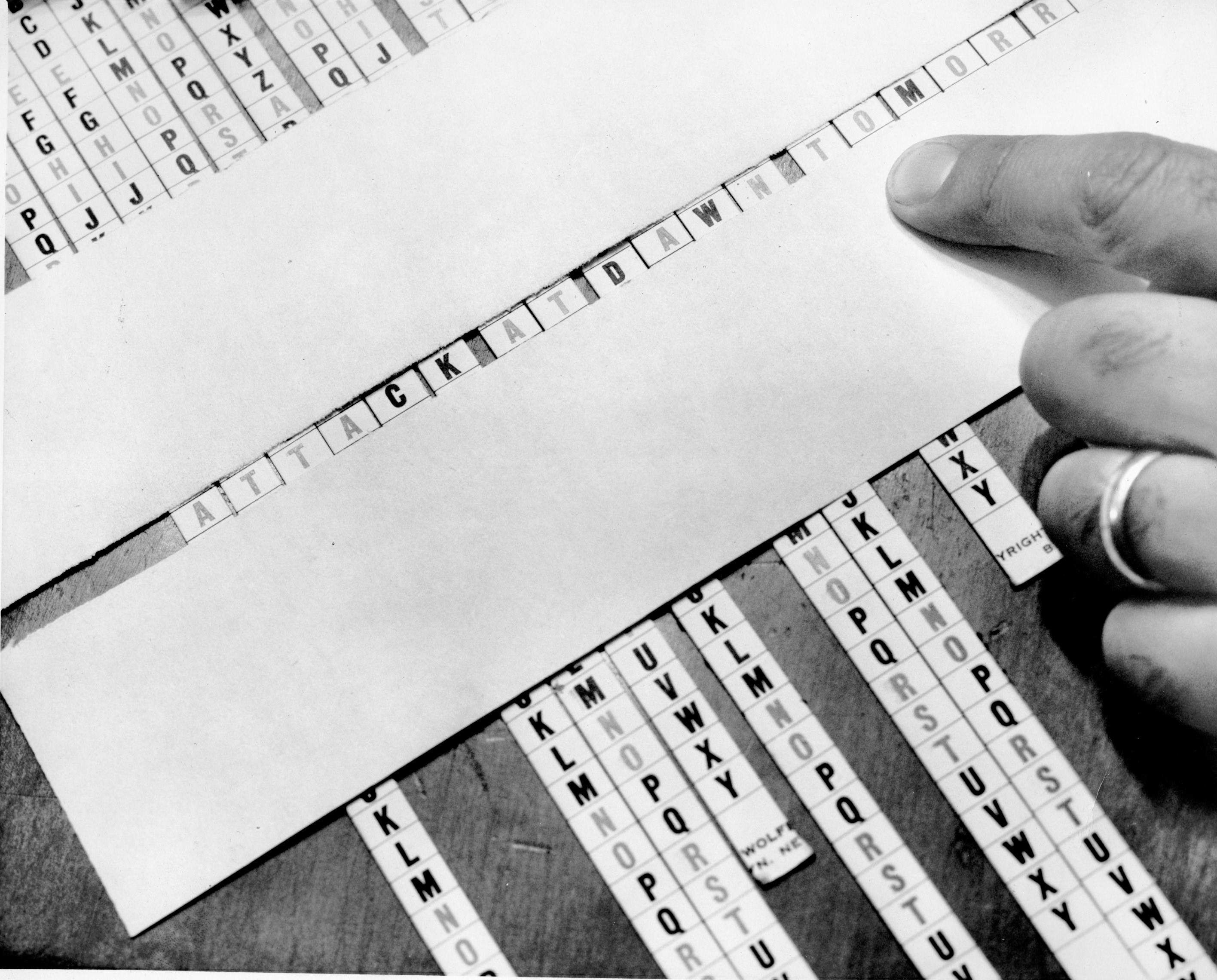
Located a few blocks from NSA headquarters at Fort Meade, this is the first public museum in US intelligence history. (Both the CIA and DIA have museums open to agency employees only.) Covering the history of cryptography—the art of making and solving codes—the museum is home to the DEC Alpha, a recently retired supercomputer that once generated nuclear-launch codes; the world’s first known cipher device, a wooden wheel that possibly belonged to Thomas Jefferson; and a gift shop that sells—wait for it—NSA “Secret Sauce,” which is for barbecuing, not sticky-fingered decoding. Tickets $16.95 to $31.95.
Russian Embassy
2650 Wisconsin Ave., NW.
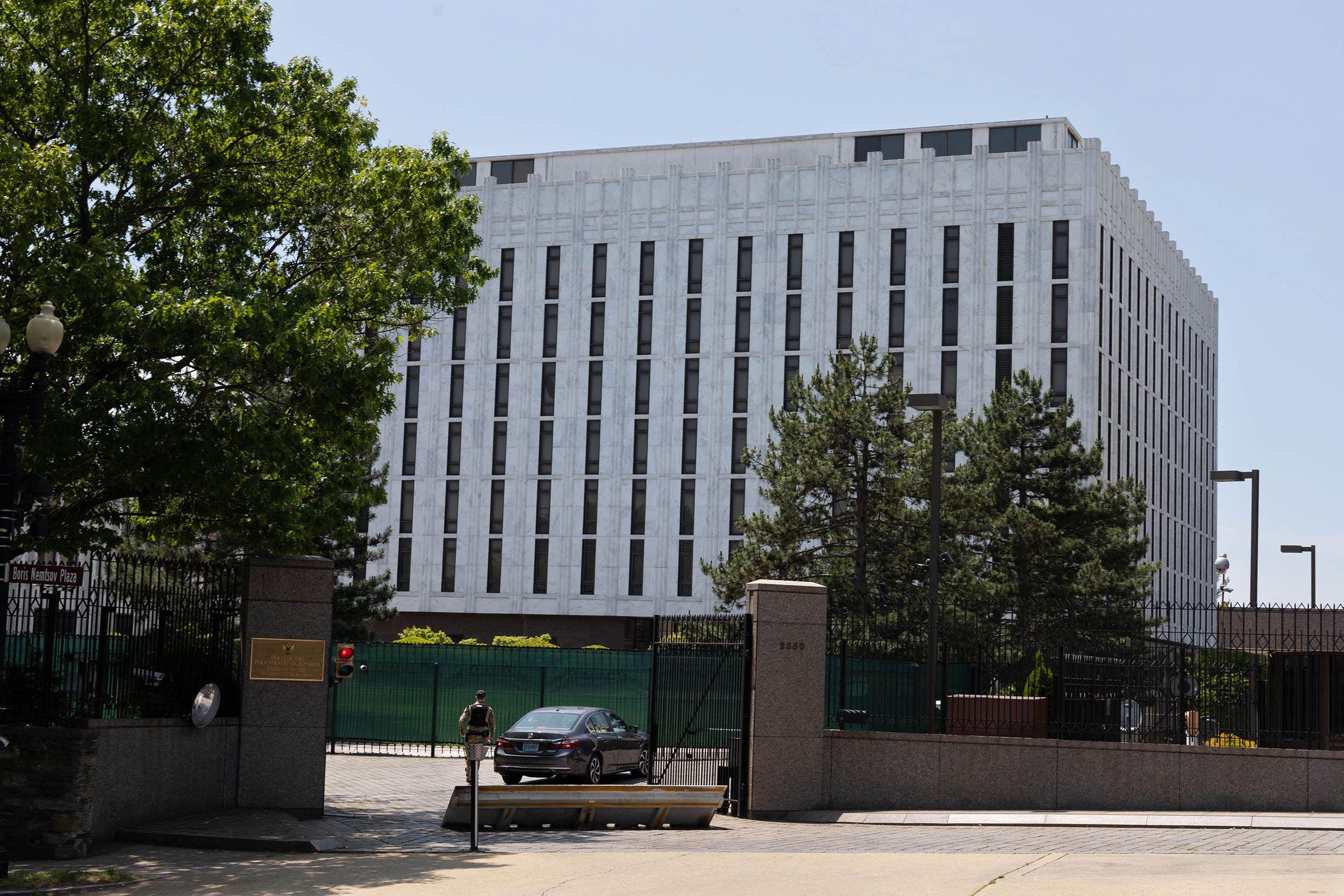
An epicenter of Cold War espionage—and, let’s be honest, plenty of ongoing spying between the Putin regime and the US—this fenced-in compound in Glover Park radiates cloak-and-dagger vibes. It’s where current Russian intelligence officers are almost certainly based, where the US government reportedly dug an ill-fated underground spy tunnel, where the FBI allegedly set up a surveillance operation in a house across the street, and where multiple American turncoats have gone to sell secrets. As a bonus, the embassy is within walking distance of a Georgetown mailbox that CIA-officer-turned-double-agent Aldrich Ames marked with chalk to alert his Russian handlers; the Cathedral Heights apartment where Russian agent Maria Butina lived; and the Glover Park grocery stores where American spies Kendall and Gwen Meyers passed documents to their Cuban handlers. Free.
Spy Tours
Washington teems with places where spies once lived and worked—and the stories that go along with them. Why not treat yourself to some show-and-tell? SpyGuide offers two-hour small-group walking tours of Georgetown, Embassy Row, and Capitol Hill that are led by former CIA officers and cover the espionage histories of each area. For larger groups, Francis Gary Powers Jr.—yep, son of the famous U-2 spy-plane pilot shot down over Soviet airspace during the Cold War—offers an all-day bus tour of spy sites in Arlington, Georgetown, and other parts of the DC area. SpyGuide: 703-653-0115; Francis Gary Powers Jr. tour: spytour.com.
Wall of Spies Experience
4600 Sangamore Rd., Bethesda
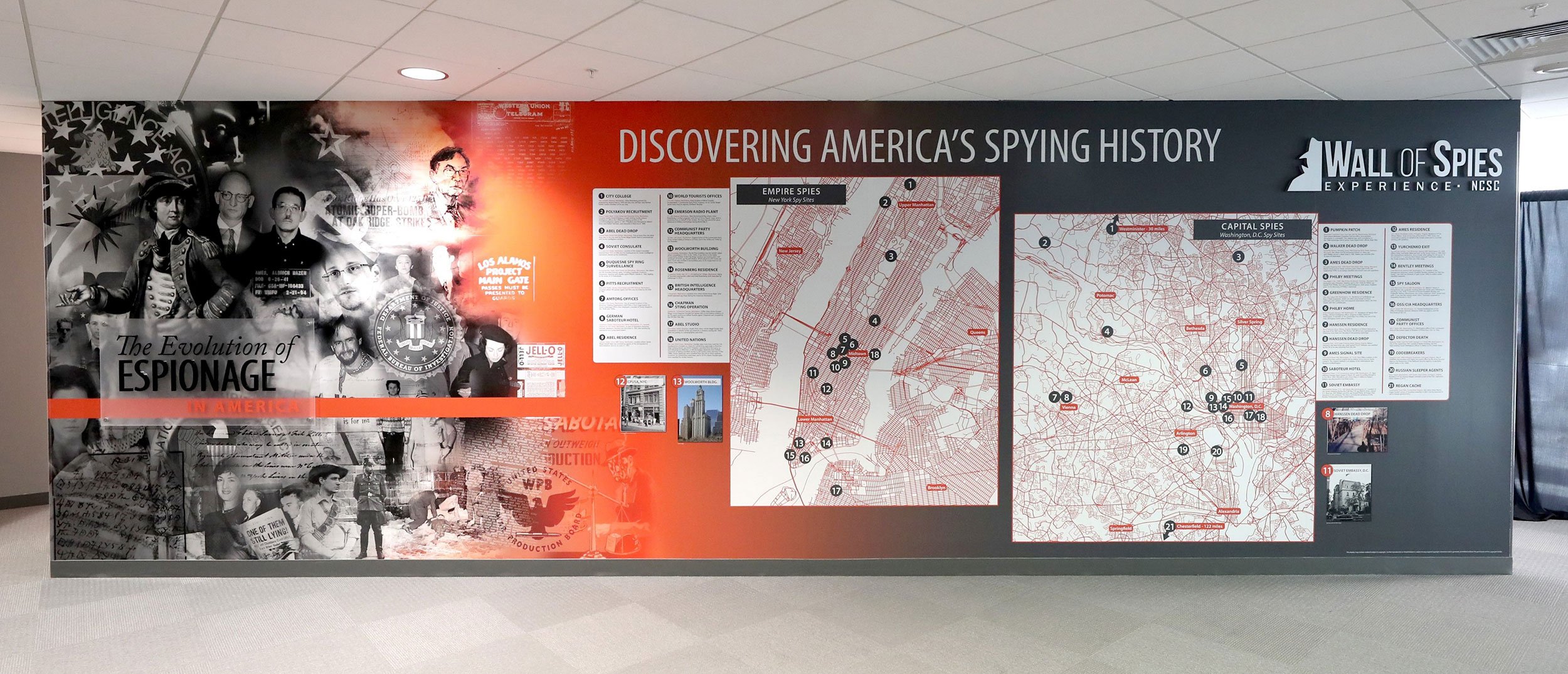
Opened in 2019 on the campus of the National Counterintelligence and Security Center in Bethesda, the Wall of Spies Experience was created to act as both history lesson and warning about American traitors. Previously known as the “Wall of Shame” and focused on spies from the 1930s onward, the exhibit was expanded to encompass the full history of US espionage—ranging from Founding Father John Jay’s unraveling of a British plot to kidnap or kill George Washington during the Revolutionary War to Edward Snowden’s leaking of NSA secrets. While the physical museum is open only to intelligence-community personnel, its publicly accessible online companion tells the stories of dozens of spies across eras—including Underground Railroad conductor Harriet Tubman, who provided Civil War intelligence to the Union Army and accompanied those forces on raids of Southern plantations.
Cuban Embassy’s Secret Bar
2630 16th St., NW.
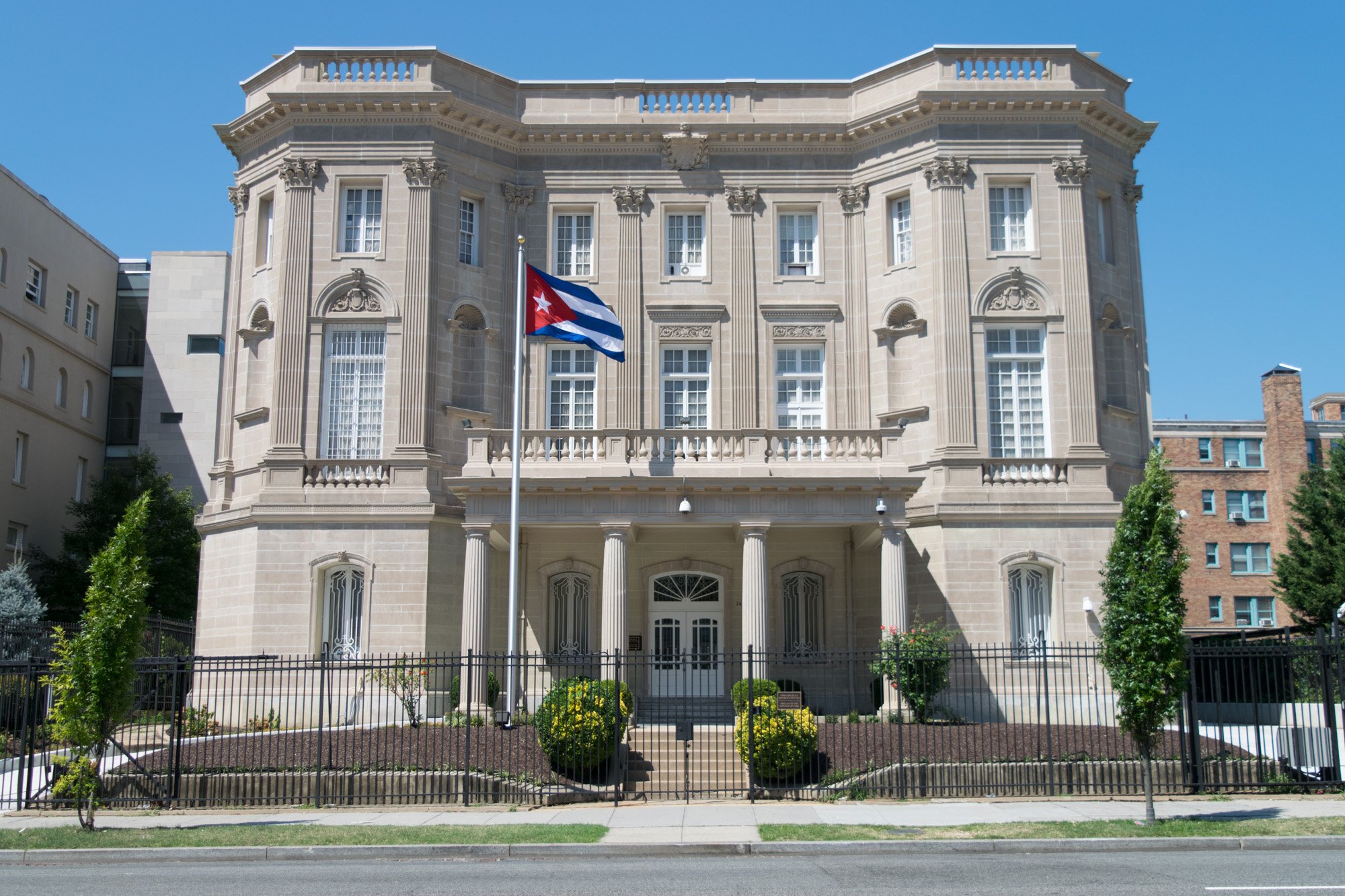
Your mission, should you choose to accept it, might be impossible: drink a mojito at the Ernest Hemingway–themed bar that may or may not still exist inside the Cuban Embassy. Opened in 2011 in the then–Cuban Interests Section of the Embassy of Switzerland—the US and Cuba didn’t reestablish diplomatic relations and reopen their respective embassies until 2015—the invitation-only bar offered Cuban rum and cigars that at the time were illegal to import. According to the 2017 book Spy Sites of Washington, DC, the bar also “provided a private environment for Cuban intelligence officers to ‘chat up’ ” visitors. That same year, a Washington Post reporter was unable to score an invite—or even confirm that the bar was still open—leading her to call it “officially the hardest seat to get in town.” Good luck!
Back to Top
07 I The Spy House Next Door
For years, the FBI spied on the Russian Embassy from this normal-looking home across the street—at least that’s what the neighbors say
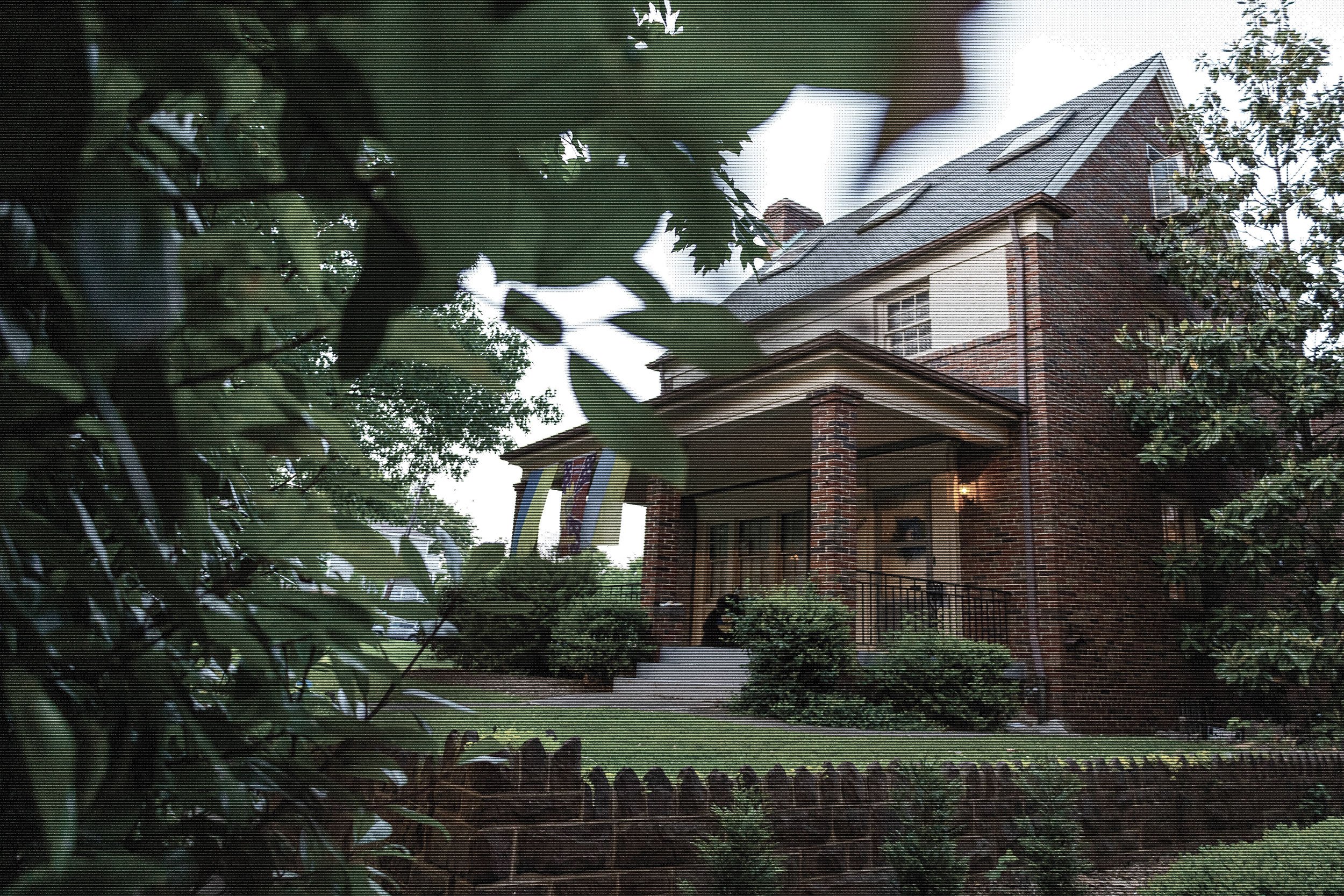
In the mid-1980s, at a rundown group house on upper Wisconsin Avenue, a woman named Monica heard a knock at her door.
On her porch, she found two men claiming to be FBI agents. They asked if they could tune their listening devices from her attic.
Gobsmacked, Monica looked them over. These men were clean-cut, nondescript, middle-aged—plausibly FBI. But how could she know for sure? She took down their information and sent them away. After all, they could be murderers or rapists. Or they could be Soviet spies from the brand-new embassy compound across the street.
When Monica called the bureau about the men at her doorstep, nobody would confirm who they were. Nonetheless, she got the impression that it would be good to invite them back. The agents arrived “dressed like dads” (windbreakers, jeans, sneakers), hauling electronic equipment disguised as groceries. These “groceries,” they said, were devices for eavesdropping on the Soviets, which they used while circling the embassy compound in vans. Up they went to her attic, bags in tow. Then they left and never came back.
A couple years later, the FBI turned up again, this time at the house next door. After decades as a family home, the property became a rental—and the new tenants struck the neighbors as strange. Seven days a week, teams of men rotated in and out of the house at eight-hour intervals, almost as if they were working in shifts. Often, these men hauled large bags of Kodak film, which was probably for the cameras—the ones that could sometimes be glimpsed through the house’s tinted windows, but only when the sun hit just right. Those cameras were mounted on tripods, pointed at the embassy across the street.
From roughly 1990 through 2013, neighbors say that 2619 Wisconsin Avenue was a “spy house”: an observation and listening post disguised as a residence. The FBI, of course, won’t comment, but many of the locals will. For decades, the blocks surrounding the Russian Embassy have been abuzz with odd stories: a secret tunnel mouth for espionage, garages with blacked-out windows, unexplained interference on phone calls, and a mysterious rooftop antenna array. Yes, this sounds like conspiracy theory—but most of it is probably true.
If you strolled past the Russian Embassy, in the upper reaches of Glover Park, you might not notice the house. It’s a red-brick Colonial with straw-colored trim that blends in with the rest of the block. Nothing about it stands out, except maybe the windows—the three dark ones set into the roof. It’s hard to say why they’re conspicuous, though skylights don’t normally face the street.
The spy house’s owner is Michael Massino; his grandfather built it around 1935. On the phone, he’s terse and careful, insisting that he “won’t talk about anything about the house.” True to his word, he doesn’t divulge much. This excerpt will give you a taste:
Why is it that you can’t talk about your house?
“I like my privacy. I’m prudent.”
Was there a tenant living there between 1990 and 2013?
“There was a tenant.”
Can you say anything else about that?
“Nope.”
Is it true that your house was a surveillance post?
“I have no comment on it. People say a lot of different things.”
While Massino is tight-lipped about the property, a half dozen neighbors are not. Their stories are consistent: Each day at 8 am, a team of agents would arrive at the house. These were typically men, they wore jackets and button-downs, and they drove dark, unmarked sedans. Another team replaced them at 4 pm, then a third at midnight. The men didn’t small-talk, and they never discussed who they were.
Neighbors say the house was overt. “It wasn’t like [the FBI] was trying to keep it secret. For years, it was full-tilt knowledge.”
At the house, the shades were always drawn and the lights stayed off. Nobody was ever in the yard, and the garbage bins rarely went out. “My sister would go over there all the time wanting to borrow sugar, just to irritate them,” says Kevin McDuffie, who lived one house down, “but they’d sort of look out the blinds and not ever answer the door.”
Typically, the spy house kept a low profile, but occasionally it made a splash on the block. In 2001, for instance, McDuffie says he was at work when he got word that a man had broken into his house. He rushed home to find military vehicles parked up and down Wisconsin, which seemed excessive, since the burglar was just an older guy, disoriented from drugs. “People were like, ‘Are you an ambassador? Are you diplomatic corps?’ ” says McDuffie, who is a real-estate agent. “Then I found out that my neighbors had called it in.”
As for hard proof of the spy house, Jim Popkin got about as close as it comes. In the late aughts, Popkin—then a reporter at NBC—was running on Wisconsin Avenue when the setting sun hit the house’s tinted skylights, revealing a camera that couldn’t ordinarily be seen. Intrigued, he ran the address through a database at work, and a name popped up as a resident. The man’s listed occupation? “Clerk really a spy.”
Popkin figures the guy wrote it as a joke—on a washing-machine warranty or magazine subscription—not realizing that “clerk really a spy” would get sucked into a database and follow him around. But it’s basically the truth: The man turned out to be an FBI surveillance specialist. When Popkin got him on the phone, he was not thrilled to be speaking with a reporter, but he didn’t deny that he’d worked at that house. The FBI didn’t confirm or deny it either, though it asked Popkin not to print the specific address.
Despite the bureau’s reticence, neighbors say the house was pretty overt. “It wasn’t like [the FBI] was trying to keep it secret,” McDuffie says. “For years, it was full-tilt knowledge. The whole neighborhood knew.” Wary of crossing the feds, most neighbors request anonymity to discuss the spy house. They also seem delighted to recall it. “I just love the spy-versus-spy stuff that happens quietly throughout Washington,” Popkin says, “including very close to where you live.”
If the neighbors knew about the spy house, then the Russians certainly did, too. Apparently, that’s standard practice; the FBI watches the Russians, and the Russians know they’re being watched. But what, specifically, were they looking for, these workers who showed up every day? Washingtonian called a few espionage experts to find out.
In the game of counterintelligence, as it’s played across the globe, you must watch your adversary’s embassy. You put eyes on all entrances and exits—24 hours a day, seven days a week, even on holidays, even when you’re short on personnel. Every face and license plate is photographed. The time of each entrance and egress is logged. Day after day, you create copious and meticulous records. When someone gets sloppy, you hope it’s the other side’s people, not yours.
Much of what you’ll see is mundane: diplomats coming to work, diplomats leaving to conduct diplomatic business, citizens applying for visas or passports, officials arriving for diplomatic events. But often, things are not as they seem. Many “diplomats” are actually undercover intelligence officers. You’ll never learn who unless you watch.
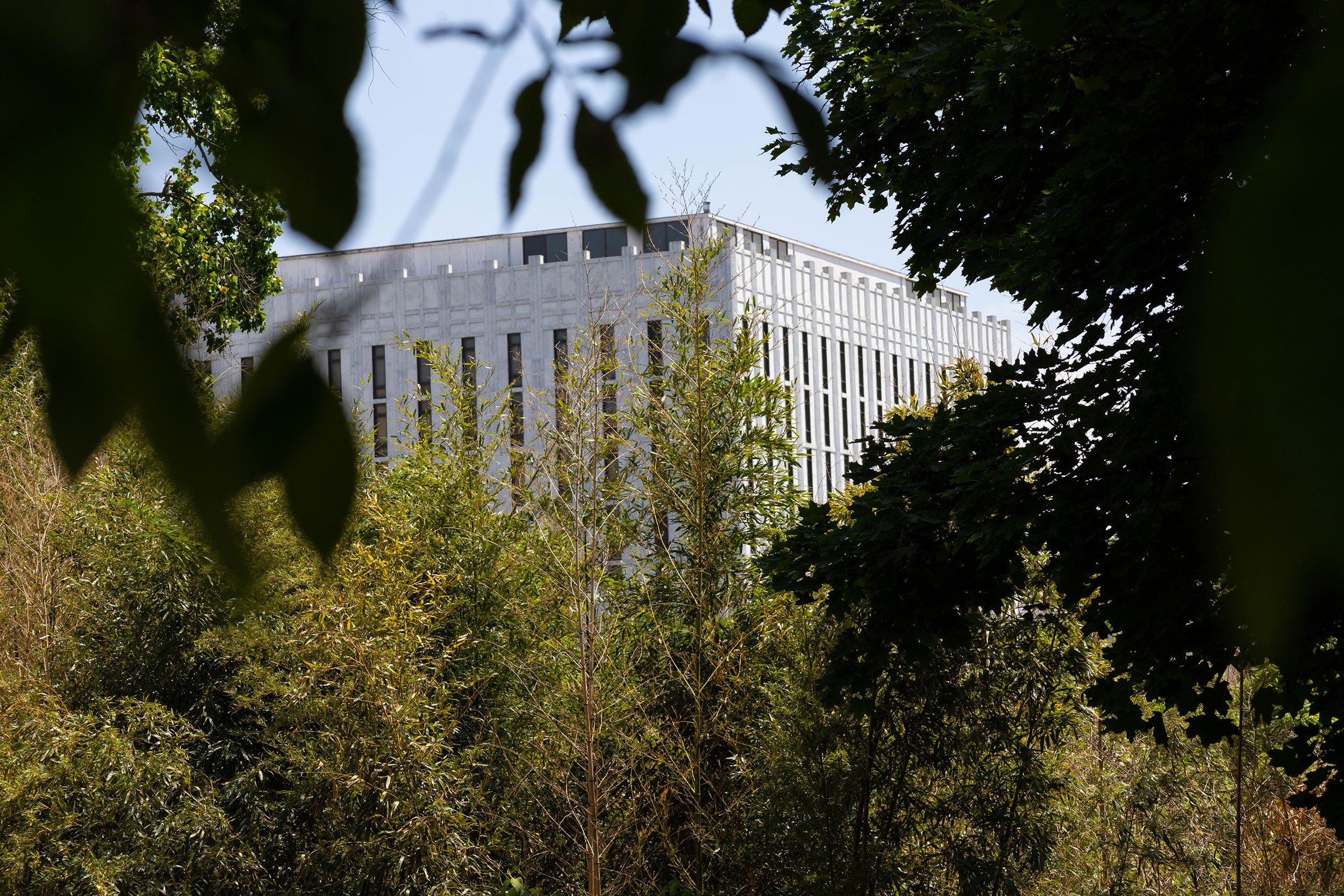
And there’s another reason to watch an embassy: to see if your own people show up. If a CIA officer knocks on the Russians’ door, maybe there’s a legitimate purpose, but it also might be treason—to sell the specs of our surveillance satellites or the identities of our agents abroad. Woe to the G-man who missed this disloyalty for a snack break. It’s a mistake that could cost billions of dollars, not to mention lives.
In addition to watching, the house was probably listening—fishing around for electronic signals from which foreign secrets might be gleaned. “There’s phenomena all around the embassy that need to be picked up,” says Andrew Hammond, a historian at the International Spy Museum: radio chatter, phone calls, machine transmissions. To collect them, agents with gadgets probably lurked in the house across the street.
While the FBI wouldn’t have eavesdropped on the locals, neighbors sometimes felt the effects. Around the embassy, there’s talk of electronic interference on phone calls and patchy TV reception. Then there was the incident with the garage door. When Bill Brownfield first moved to the street behind the spy house, his next-door neighbor told him something odd: For months, his garage door would open and close, unprovoked, at all hours of the day and night. The neighbor developed a theory that emanations between the embassy and the spy house were somehow triggering his electronic opener. Finally, he mentioned the issue to the guys at shift change. Apparently, it never happened again.
James Olson, the CIA’s former director of counterintelligence, says the neighbor’s theory checks out. “Garage doors open by electronic signal,” he says, “and when the FBI and the Russian Embassy are in the area, there are going to be a lot of electronic signals going back and forth.” In fact, he thinks most of the neighbors’ observations make sense. Classified trash is typically incinerated, for instance, so of course no one was hauling bins to the curb. And the FBI often eavesdrops in vans rigged with listening devices, which periodically need to be tuned.
During the Cold War, Olson himself was the target of a spy house—a spy apartment, actually. At the time, he worked “for the State Department” (wink wink) at the US Embassy in Moscow, but his real job was with the CIA. At the enormous residential building where he and other foreign diplomats lived, the activity on one floor was conspicuous. “Every morning, we would see a lot of [Russian] workers going up to the fourth floor with big reels of tape under their arm,” he says. “They didn’t make any bones about it. It was quite obvious that was their [listening post].”
Because of the eavesdropping, Olson had to be scrupulously careful; he couldn’t talk about his work or his personal problems, even in the privacy of his home. “I was blanketed by KGB surveillance,” he recalls, “and it was very stifling. Very oppressive. Very threatening.” To live that way takes discipline. It can drive people nuts. And that’s another reason to have a spy house: to cause pervasive psychological stress, which might lead an intelligence officer to make mistakes.
Speaking of mistakes, when planning the Russian Embassy, the US made some doozies. The first was the site itself: the second-highest hill in DC. From a counterintelligence perspective, “high on a hill” is not where you want your enemy to be.
Embassies are intelligence-gathering platforms, and one thing they’re collecting is waves: electronic communications, machine chatter—“signals intelligence,” in the parlance of spies.
Most of these waves can’t travel through buildings or mountains, but they sail right through the air. This means that if you can see a target, you can potentially collect signals from it—and from the top of a hill, much can be seen.
“Just think about it—the capital of the United States, all of those agencies, all of America’s global commitments,” says Hammond, the historian from the Spy Museum. “Imagine the amount of communication that’s necessary to keep all of those systems running.” The opportunities for signals collection are astonishing: the White House, the Capitol, the State Department, and the Pentagon—all of which are said to be visible from the Russian Embassy’s roof.
In the late 1960s, when the State Department offered the Soviets their current site, the US intelligence community went ballistic. Our primary geopolitical adversary had been handed a significant strategic advantage, and to counter it the FBI needed to be ambitious. That’s how the tunnel began. The idea was bold: In partnership with the NSA, the FBI would burrow under the embassy in an elaborate effort to snoop. Reportedly, this set taxpayers back several hundred million dollars—at least triple the cost of the entire Soviet compound.
But from the beginning, the operation was a bust. The tunnel periodically flooded, and the NSA’s surveillance equipment didn’t quite work as planned. (Reportedly, one issue was with laser beams shot into the embassy from below, which proved somewhat difficult to wield.) Another blow came from Robert Hanssen, an FBI agent who was secretly spying for Russia and tipped off his handlers to the scheme. For years, the tunnel apparently produced no worthwhile intelligence. Eventually, the FBI says it gave up and cemented over the mouth.
Until 2001, when Hanssen was arrested for espionage, the existence of the tunnel was secret, but his capture revealed the bungled operation to the world. It also surfaced a piquant detail: The tunnel evidently originated inside a nearby residential home, though the FBI didn’t specify which one.
This caused a sensation in Glover Park. Somehow, the bureau had covertly requisitioned a house in a tight-knit residential neighborhood and dug a tunnel from its basement. How did it hide the noise? Or secretly cart off the dirt? Immediately, the spy house became a focus. “Everybody speculated it was from [there],” Kevin McDuffie recalls. “I had all these people knocking on my door a lot—not just local reporters, but national reporters for NBC and ABC.”
To this day, guessing the location of the tunnel mouth remains a parlor game on the block. Some believe it’s beneath a recently torn-down house by the embassy’s back fence; others say it’s inside a blocked-off storage unit in the basement of a condo building on Tunlaw Road. Many people still think the mouth is in the spy house. Michael Massino says it’s not. Though he often hedges when speaking about his house, the tunnel mouth is the only rumor he explicitly denies.
While the aura of mystery lingers, the spy house no longer hosts spies. Toward the end of 2013, Bill Brownfield stopped seeing the shift changes. Around that time, McDuffie says the Massino family asked him to make discreet inquiries about selling the house and its adjoining vacant lot.
Together, the house and lot were an attractive parcel for development—there was talk of a homeless shelter, then a facility for senior living—which caused some of the neighbors great angst. “People were digging for any logical reason for why this would be a bad idea,” Brownfield says, and one anti-development scheme took root: If the spy house were given historic-landmark status, it couldn’t be torn down. But its historic nature—its alleged surveillance mission—has still never been officially acknowledged, and to apply on those grounds required proof.
In search of it, neighbors recruited someone to make inquiries: a senior government official who lives in a nearby house. This man, who asked not to be named, sniffed around various agencies to see if anyone might help. He said it was “like pulling teeth.” Then, after a couple months, came a response from a government official, essentially saying that while he couldn’t confirm that the property had ever been used for surveillance, he could unofficially say that the federal government was no longer interested in the house. It wasn’t enough for the historic-landmark application, but it seemed to confirm the local hunch: that the FBI had moved on.
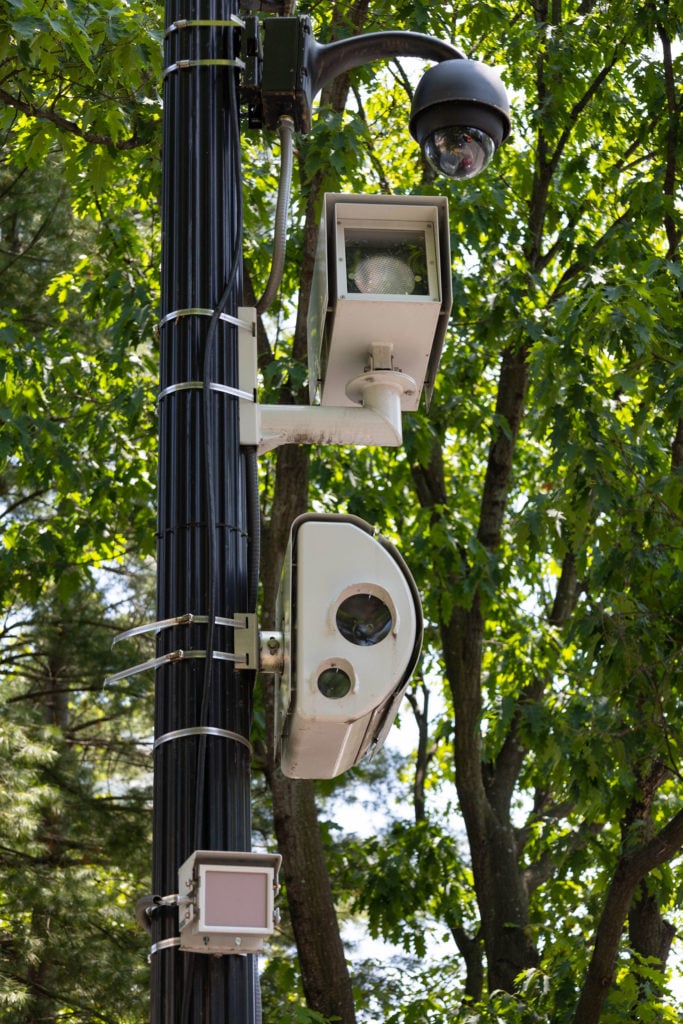
Where to? Well, obviously the bureau won’t say. But Jim Popkin points to clusters of cameras on telephone poles ringing the embassy—black globes that almost look like lamps. He’s counted 41 of them in total, blanketing the surrounding blocks. It’s possible the technology got so good that the FBI no longer needs humans to sit across the street and watch.
As for the signals collection, Bill Brownfield has a theory: On the roof of an apartment building just up the street from the embassy, there’s a “phenomenal array of electronic equipment—I mean antennas coming out of the wazoo.” Next to them is a “little structure that is kind of enclosed” that Brownfield speculates may house “particularly sensitive kinds of electronic equipment.” But he acknowledges he’ll probably never know. “I bet you’ll never get any human being in the world—unless it’s a Russian speaker—to tell you where the team went.”
These days, the spy house is still standing; no development plans have yet come through. But the exterior has been transformed—the lights are on, the yard is covered in anti-Putin signs, and the porch is draped with blue-and-yellow flags. Instead of spying on the Russians, the house now seems bent on rankling them. Massino and his neighbors are loudly pro-Ukraine.
Offered the opportunity to correct any misinformation about his house, Michael Massino declines. “I’m just very cautious about talking to the media,” he says. McDuffie, who lived next door for two decades, thinks Massino may have signed an NDA. But it’s possible things will change. Asked if there’s anything he wants to add, Massino is cryptic: “In ten years, we can talk again.”
—Sylvie NcNamara
White House icon created by Misbahul Munir from the Noun Project.
Balloon icon Created by Eucalyp from the Noun Project.
Horse icon Created by Icons Producer from the Noun Project.
Submarine Icon by Niky Chopra.
Crook icon created by Icon Fair from the Noun Project.
Heels icon created by Cuputo from the Noun Project.
Volleyball icon created by Icons Producer from the Noun Project.
Spiderweb and Kmart Icons by Niky Chopra.
This article appears in the July 2023 issue of Washingtonian.
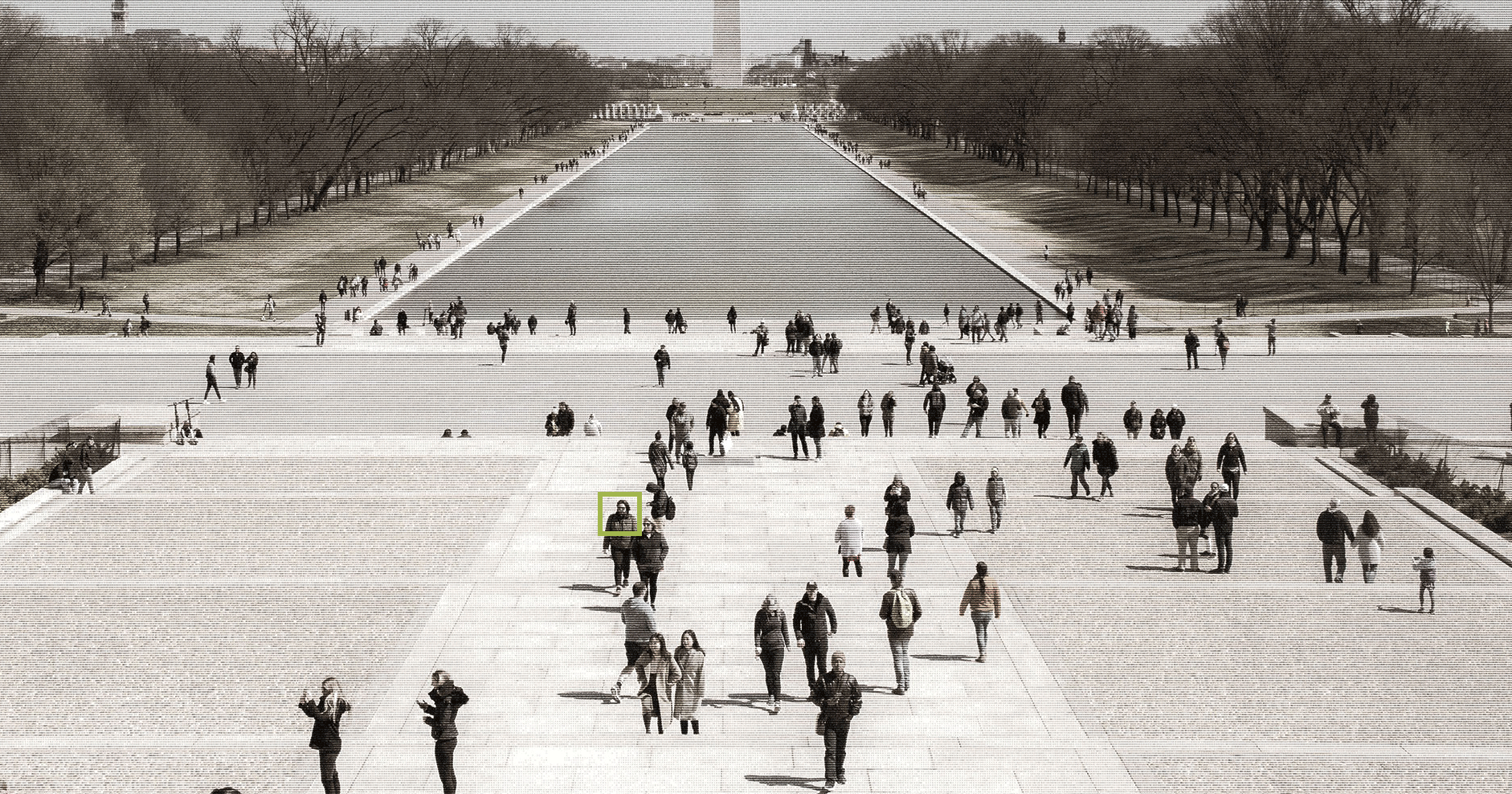



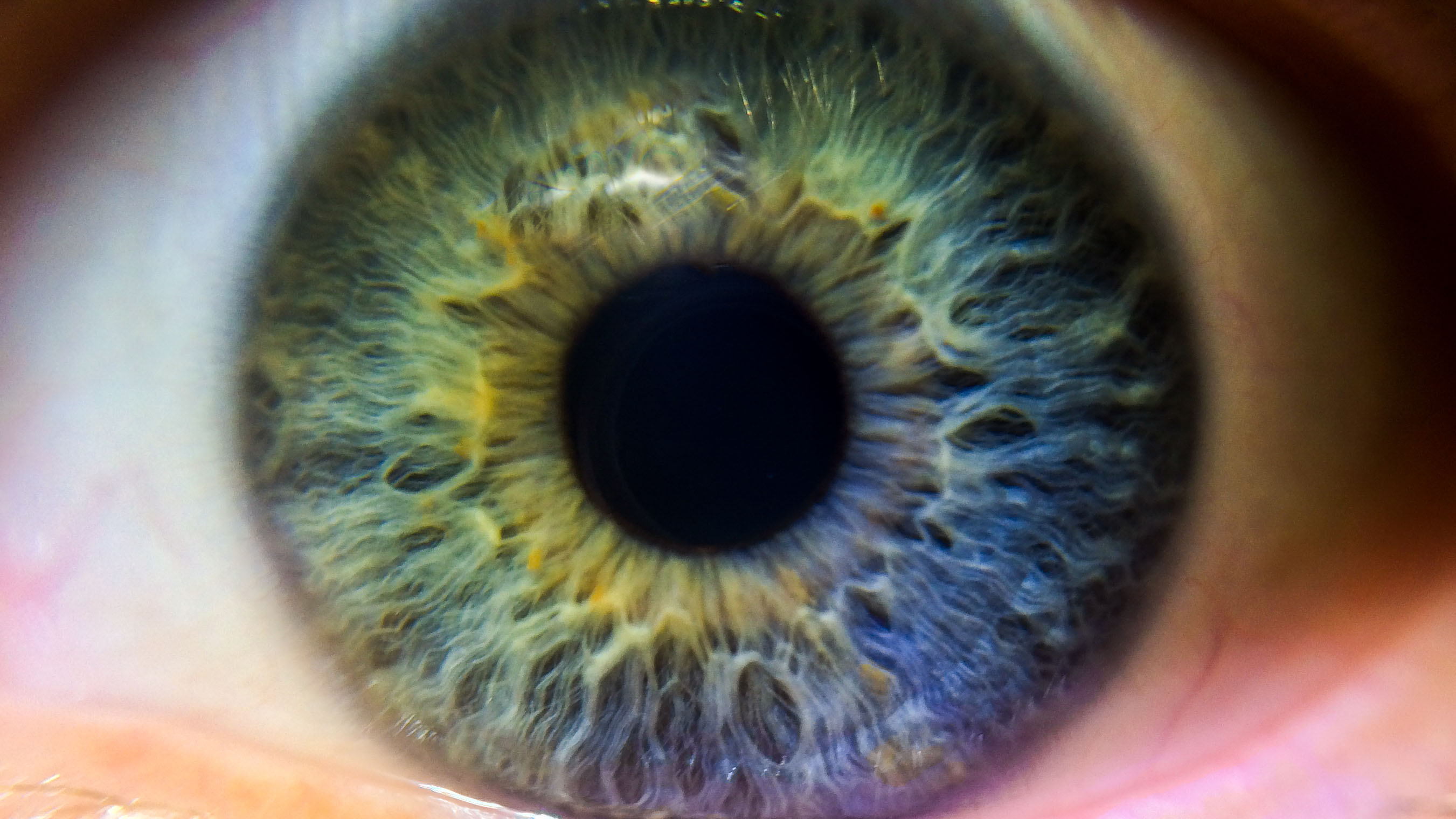

![Luke 008[2]-1 - Washingtonian](https://www.washingtonian.com/wp-content/uploads/2017/10/Luke-0082-1-e1509126354184.jpg)
